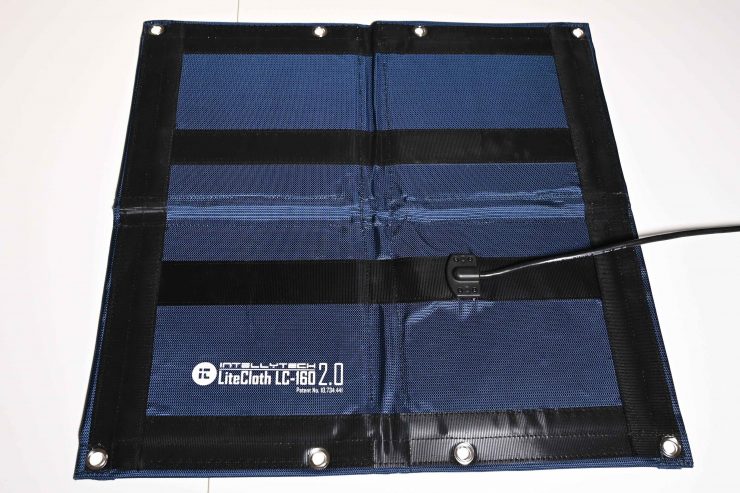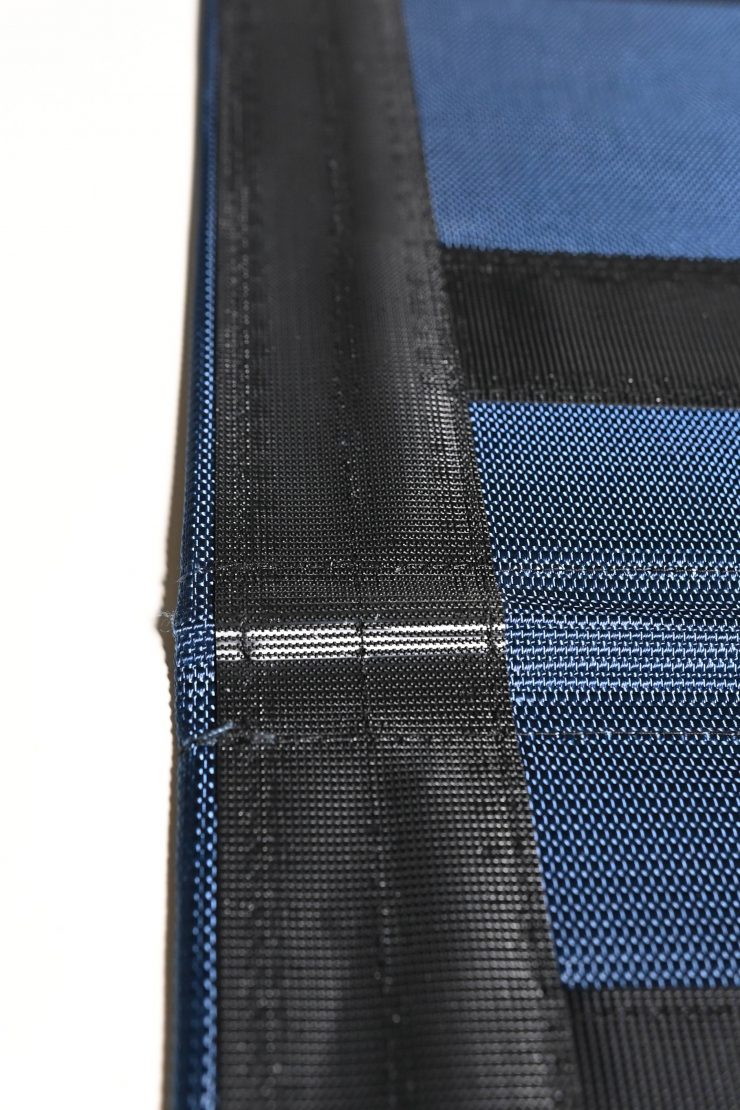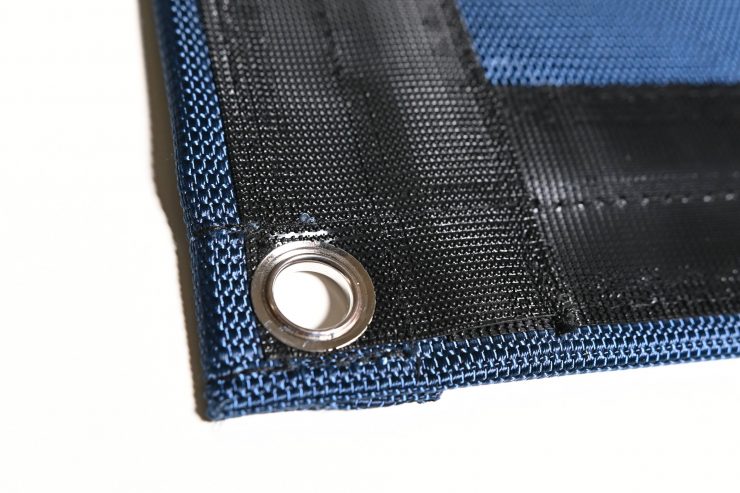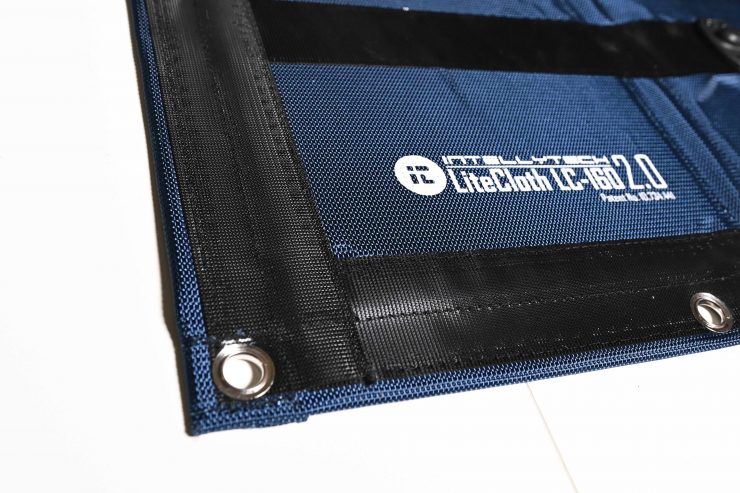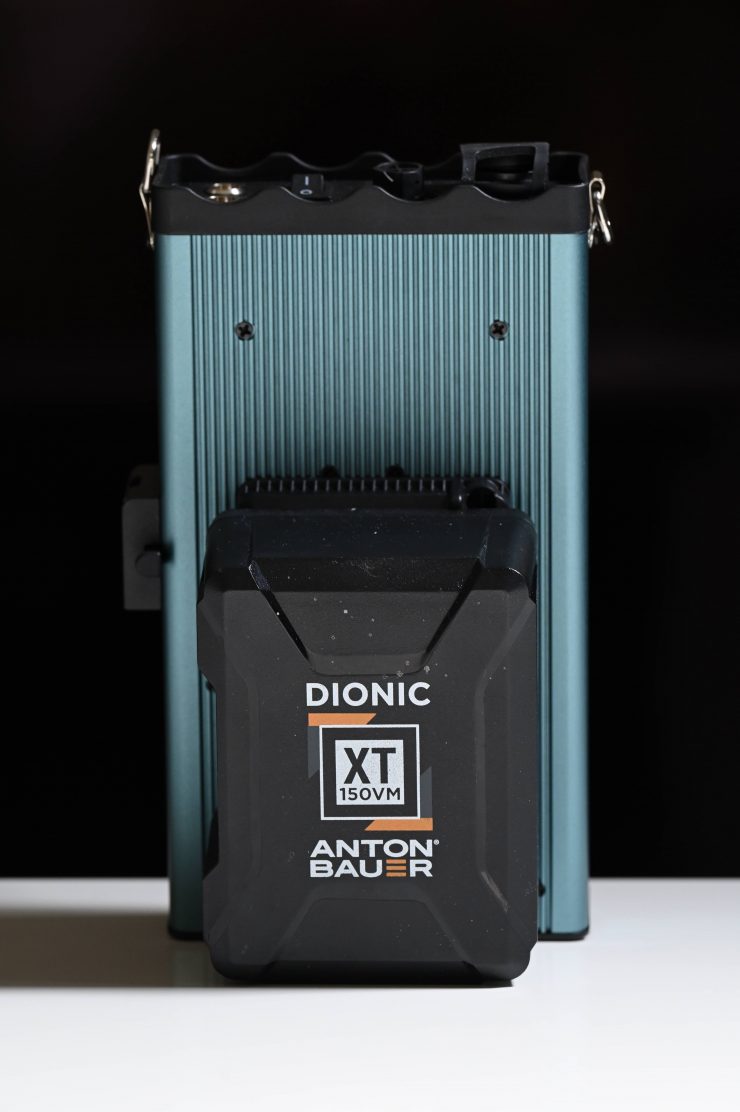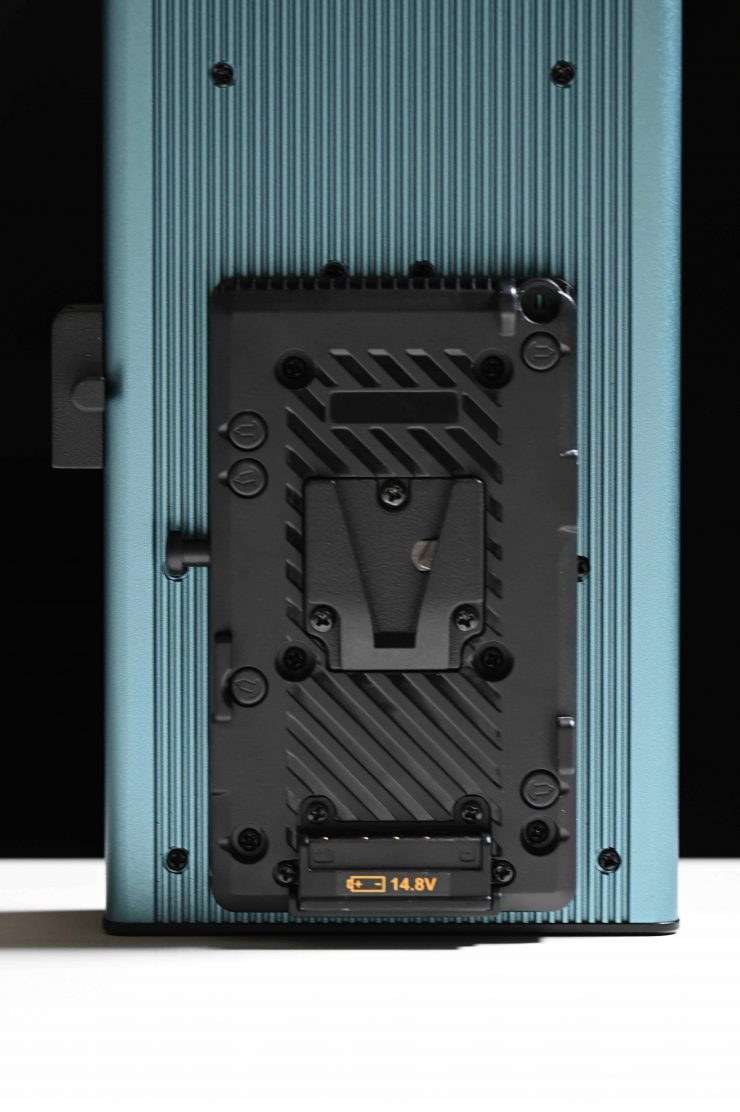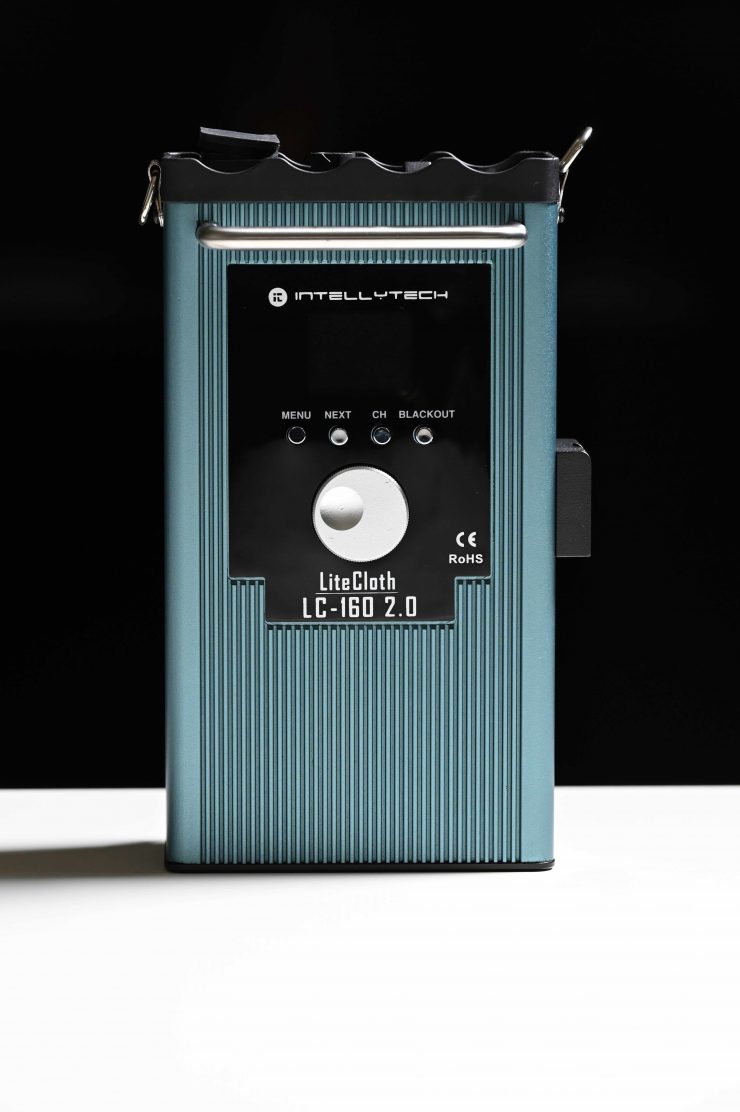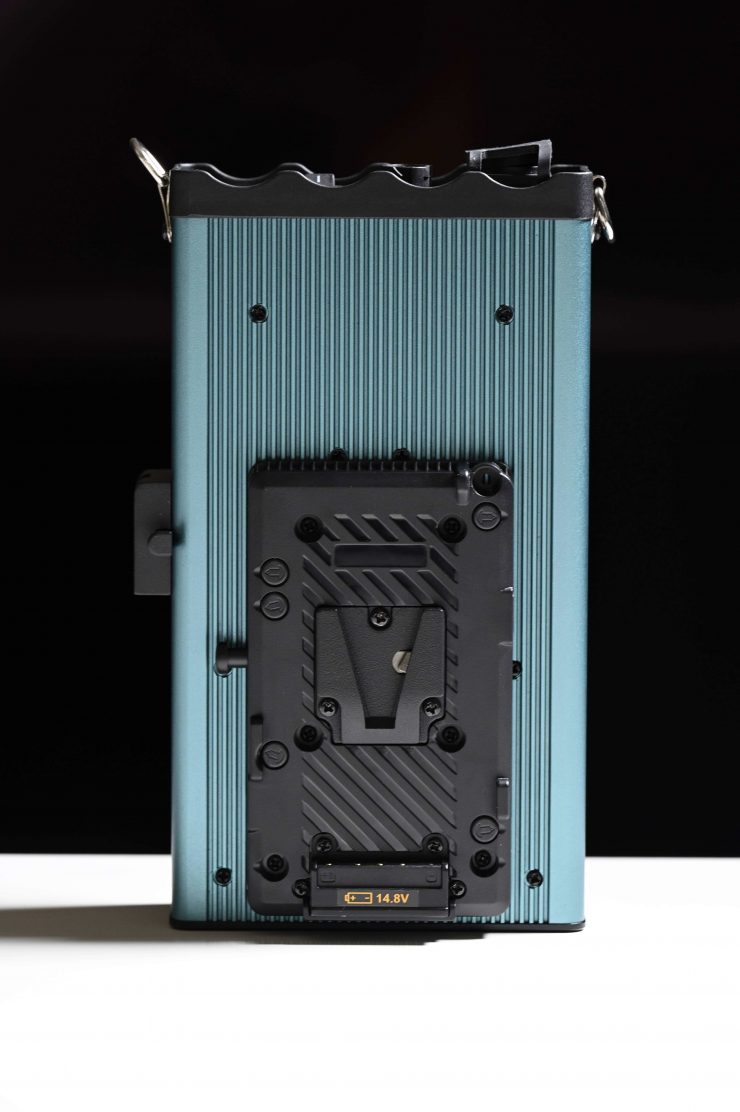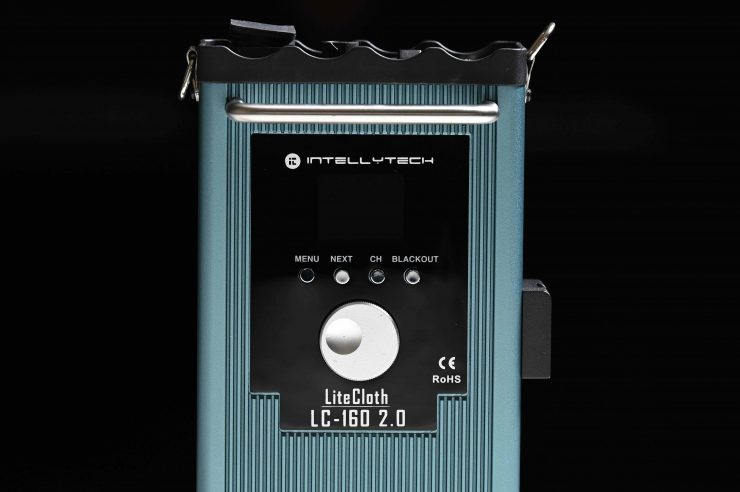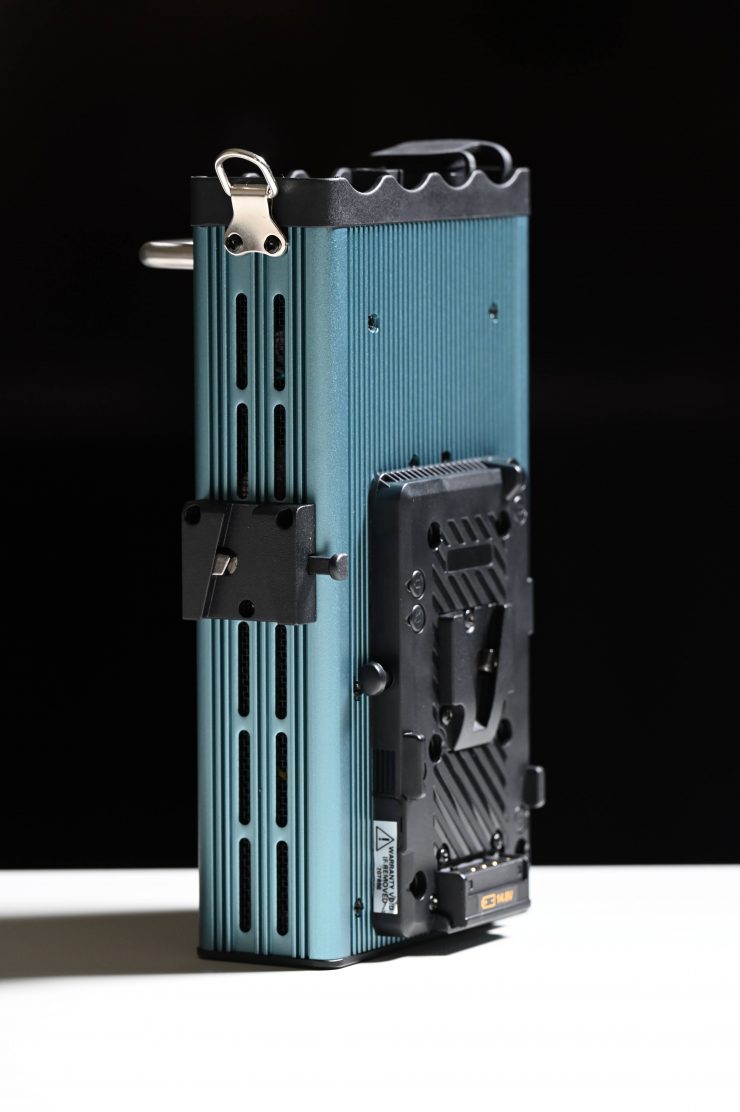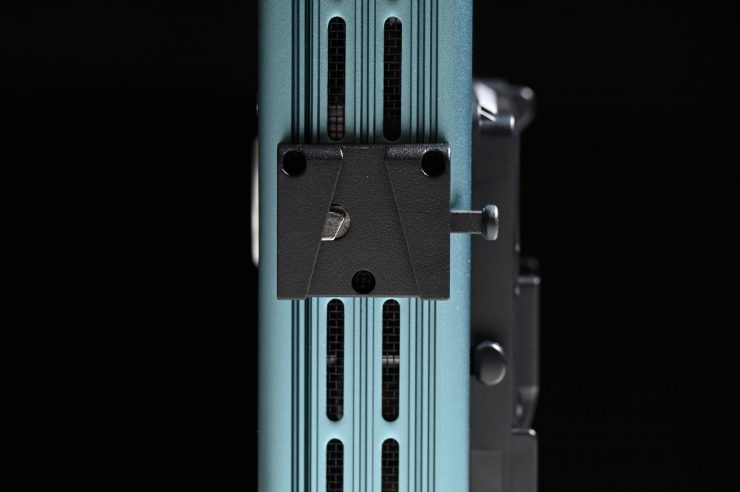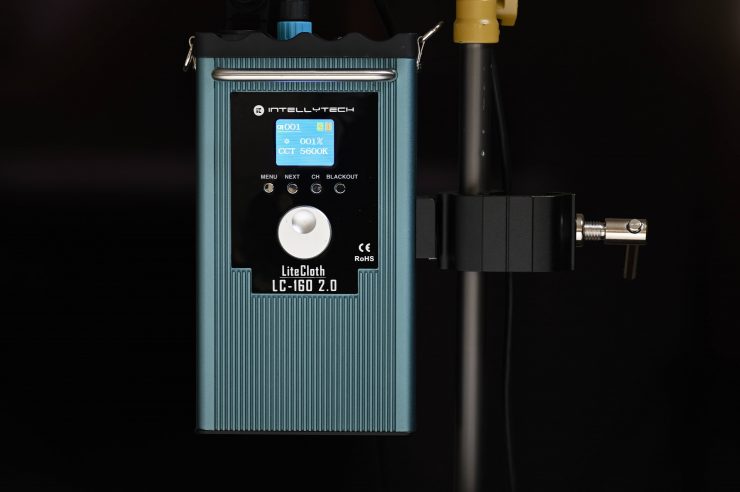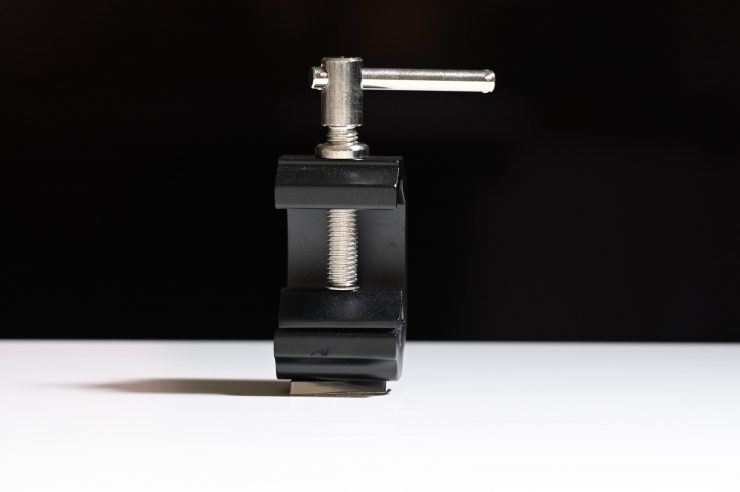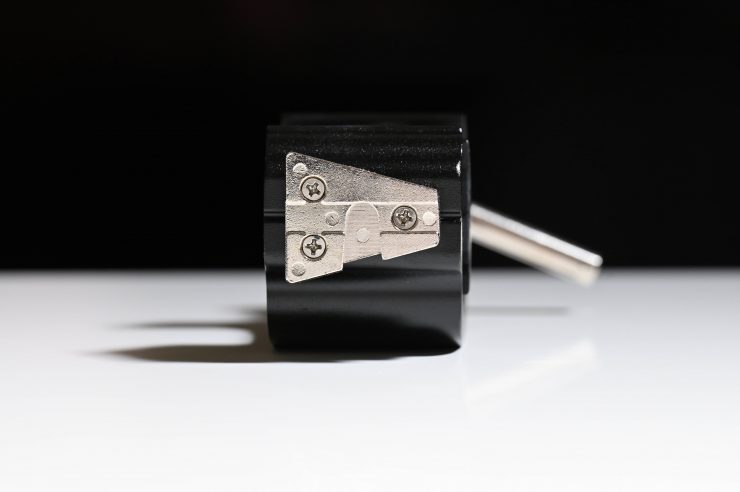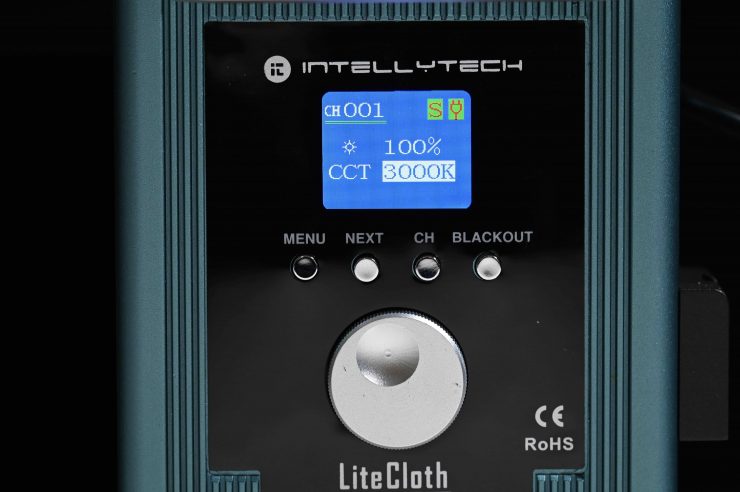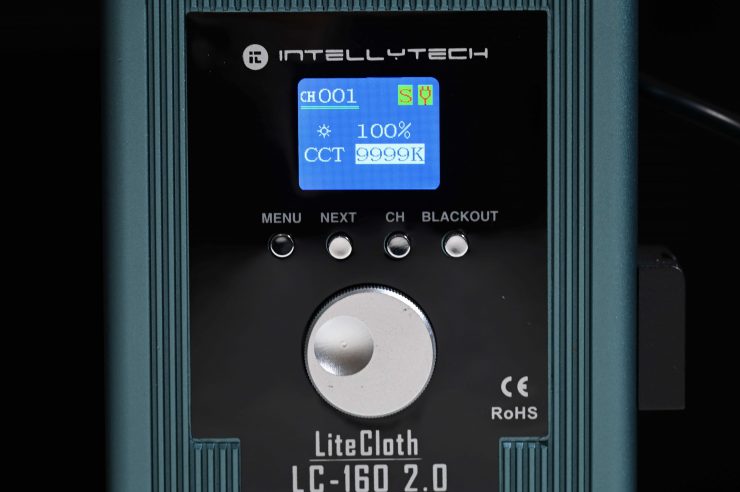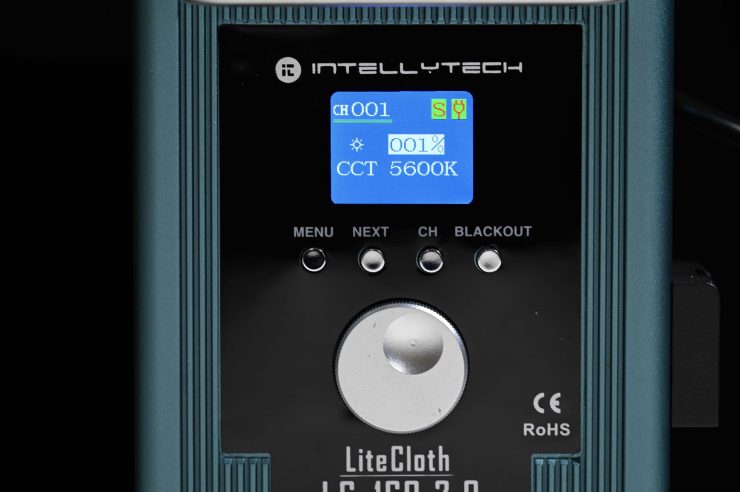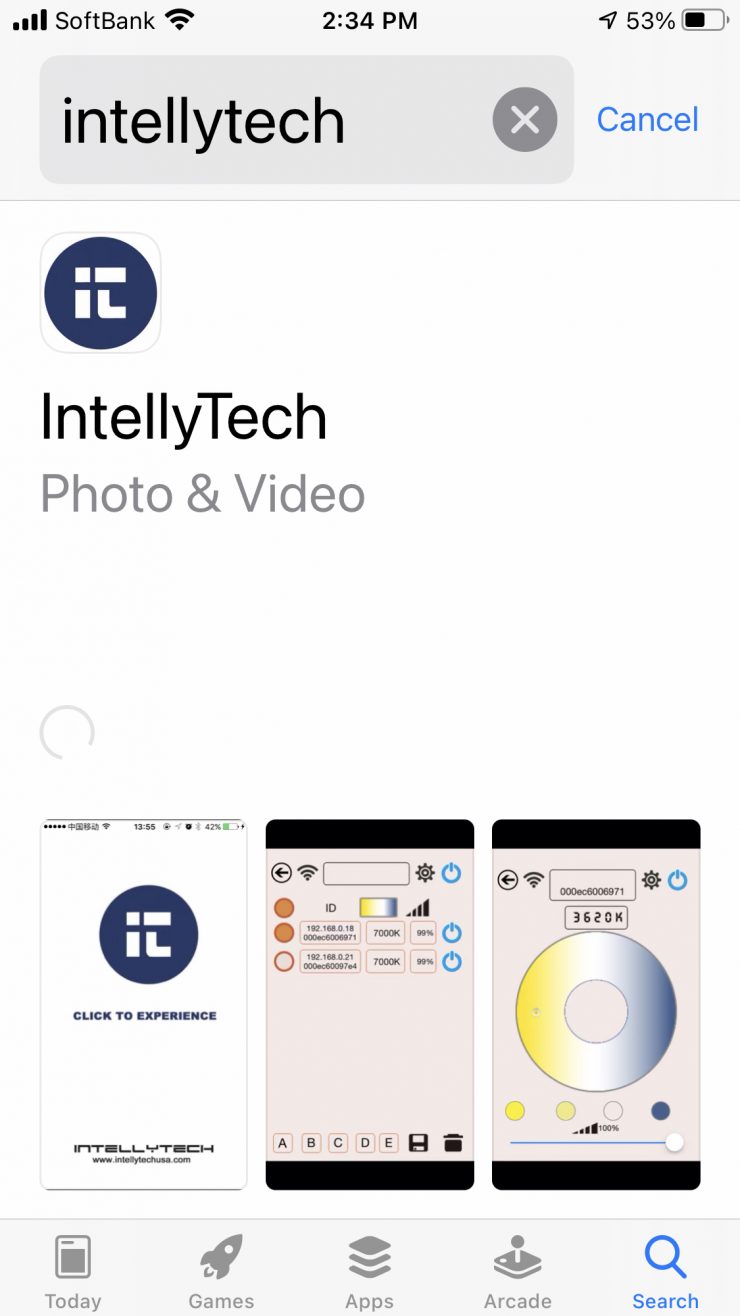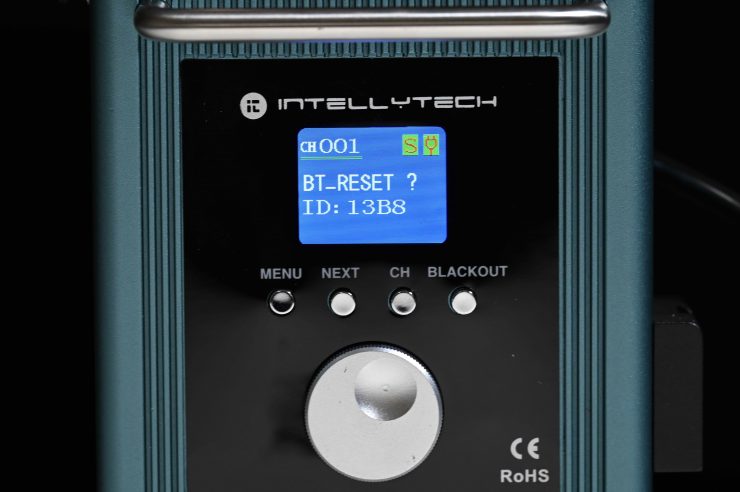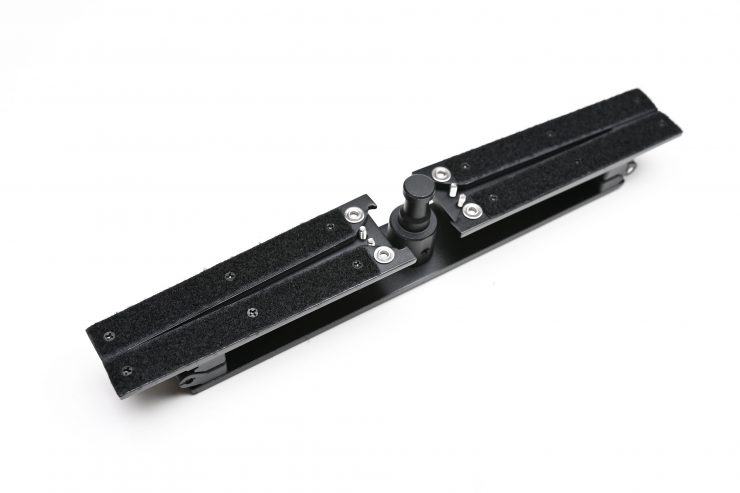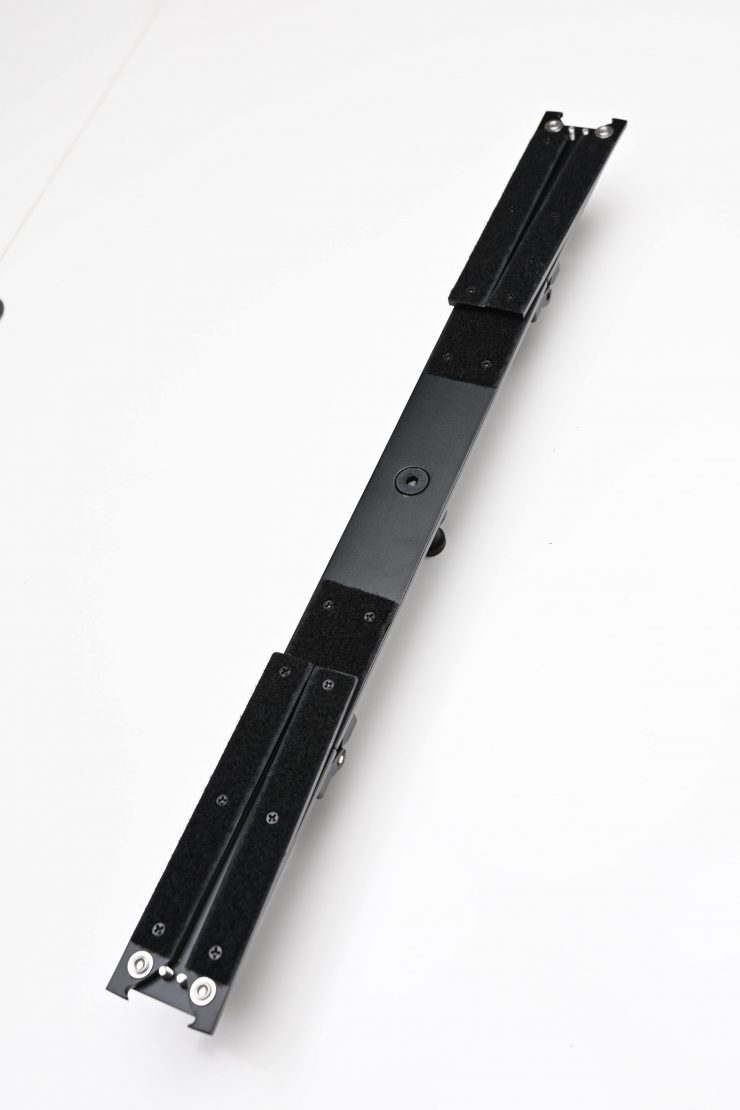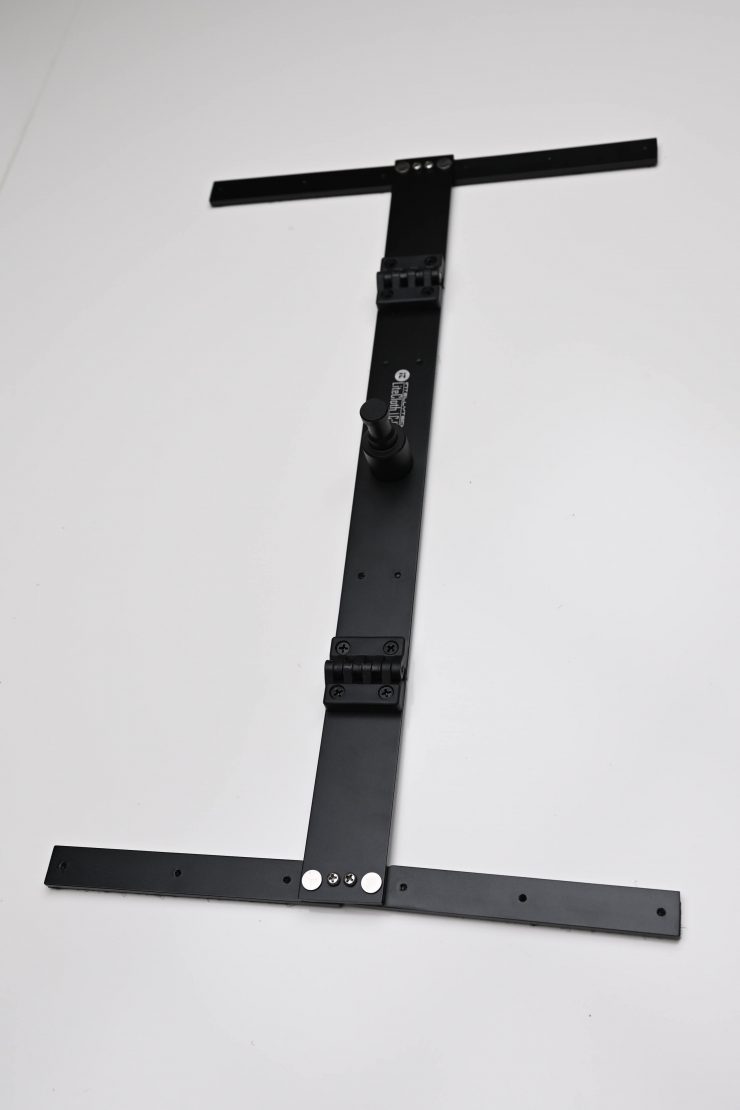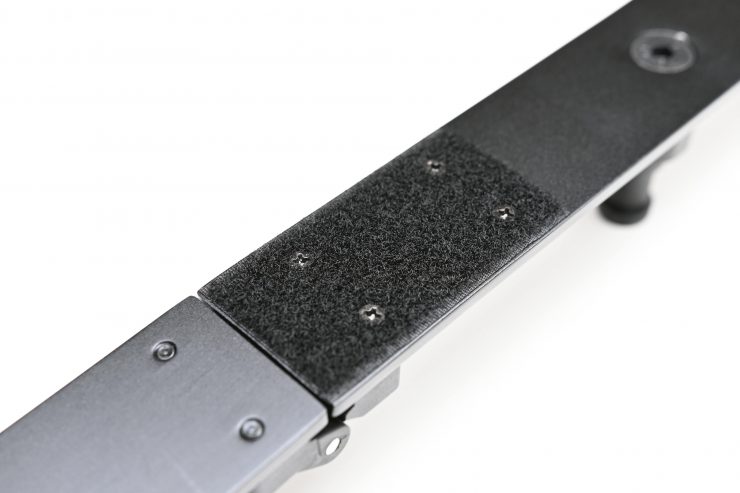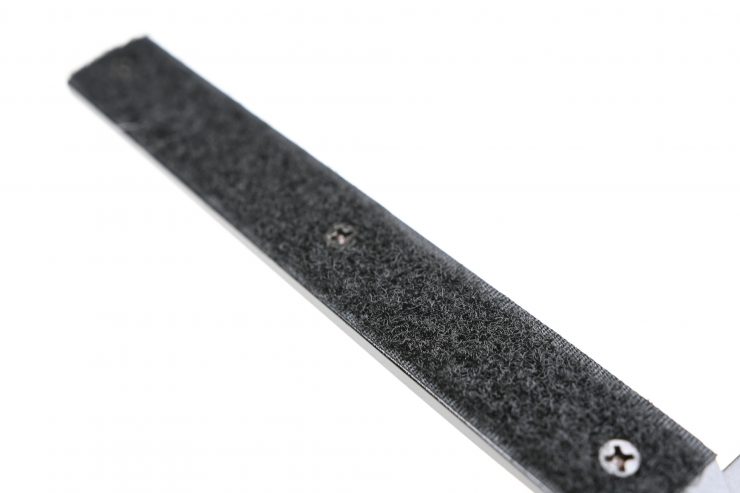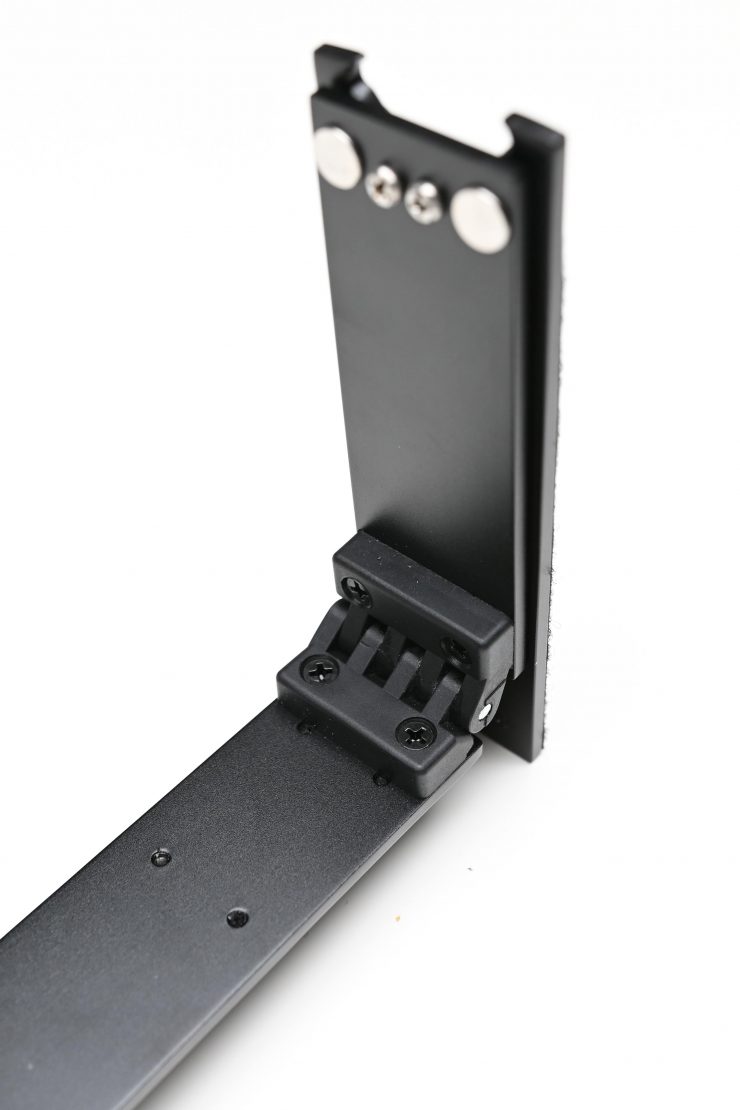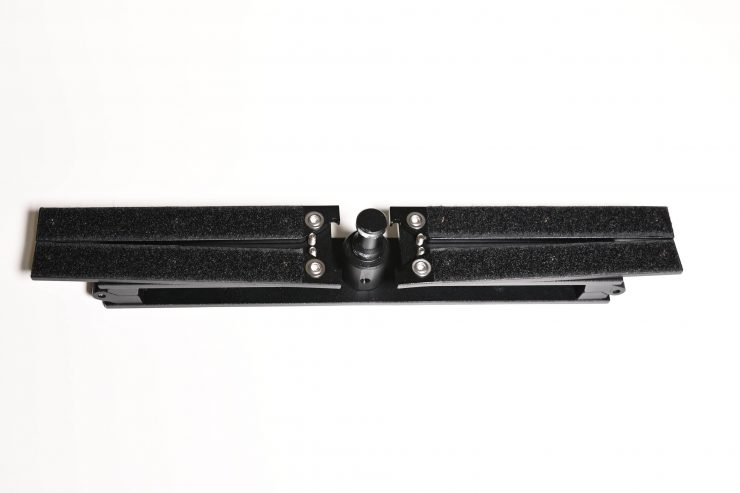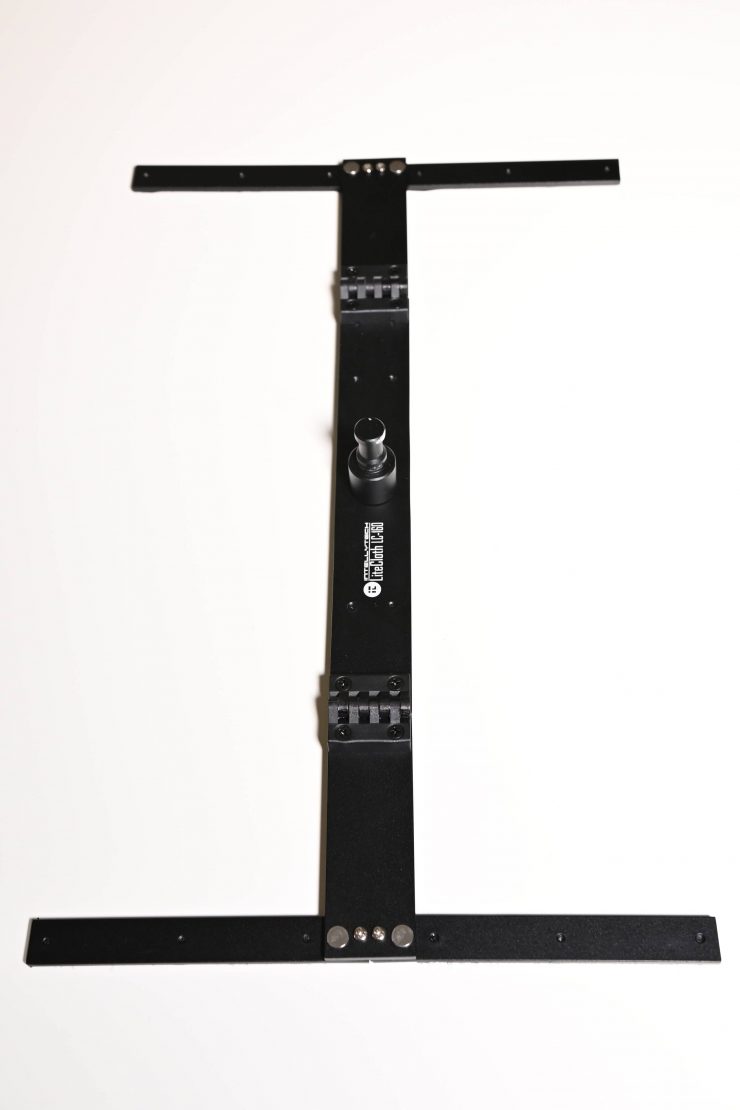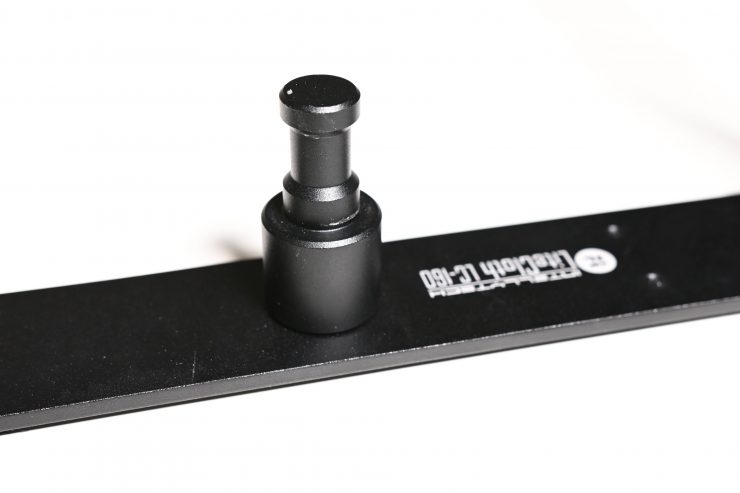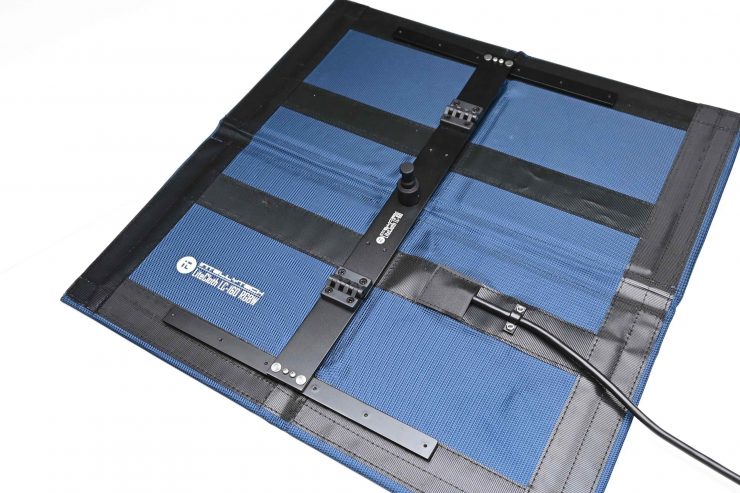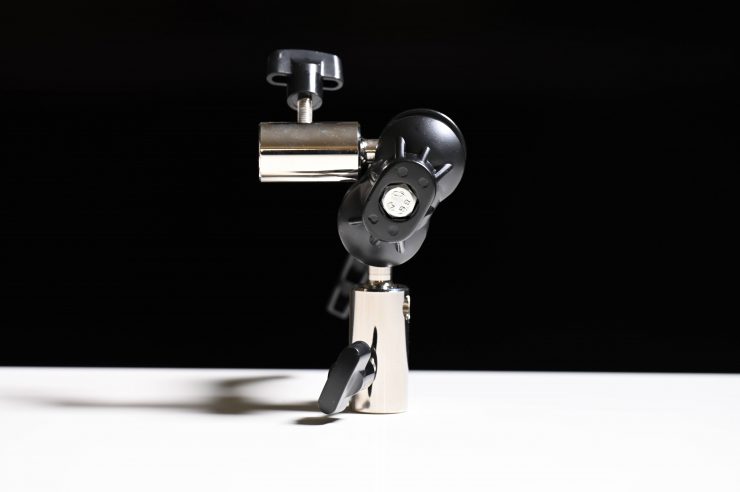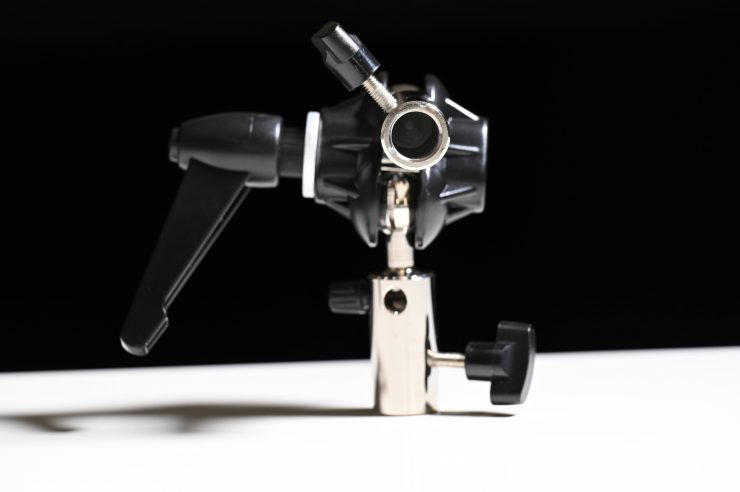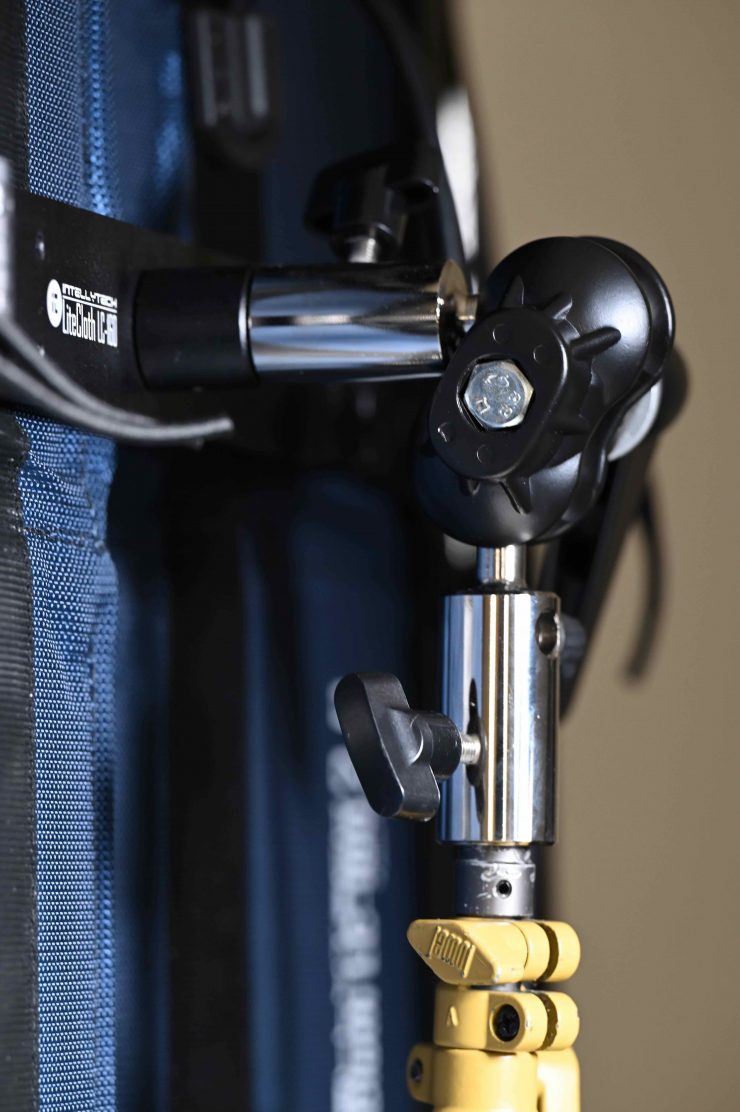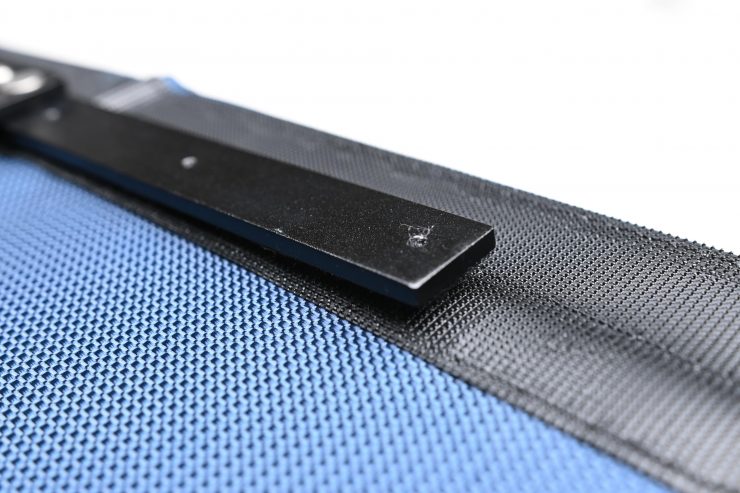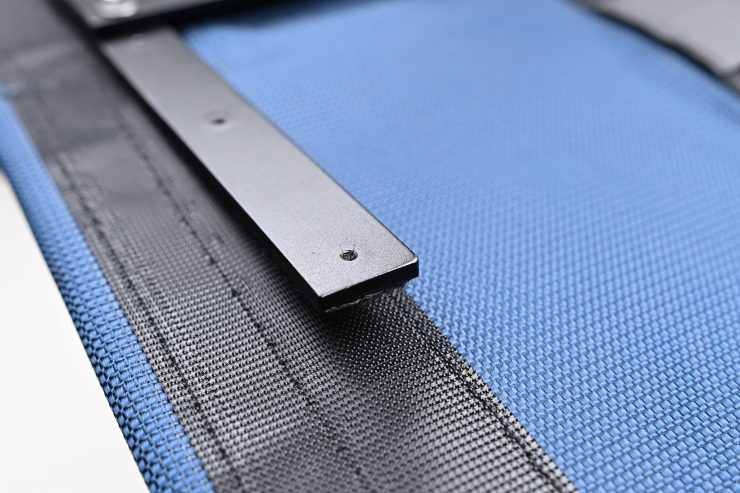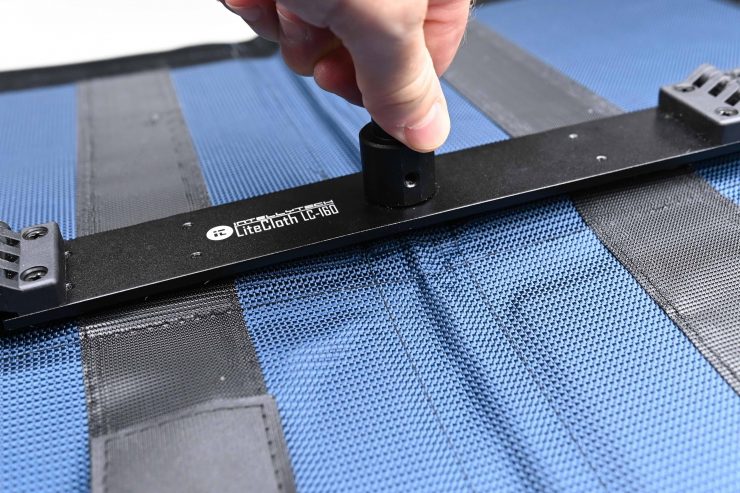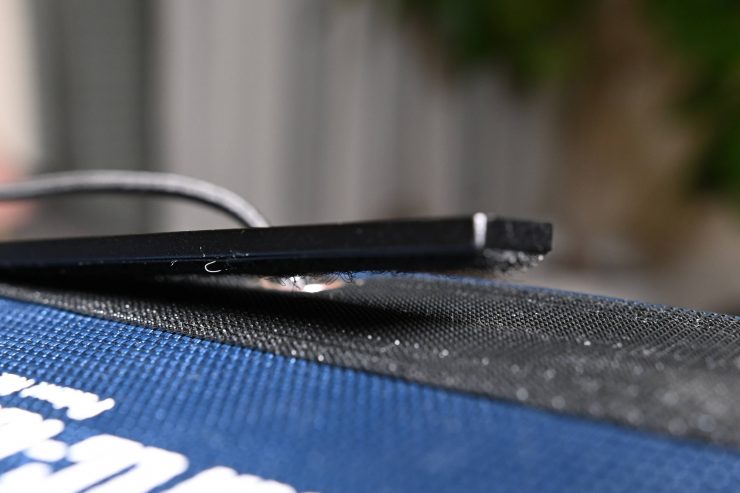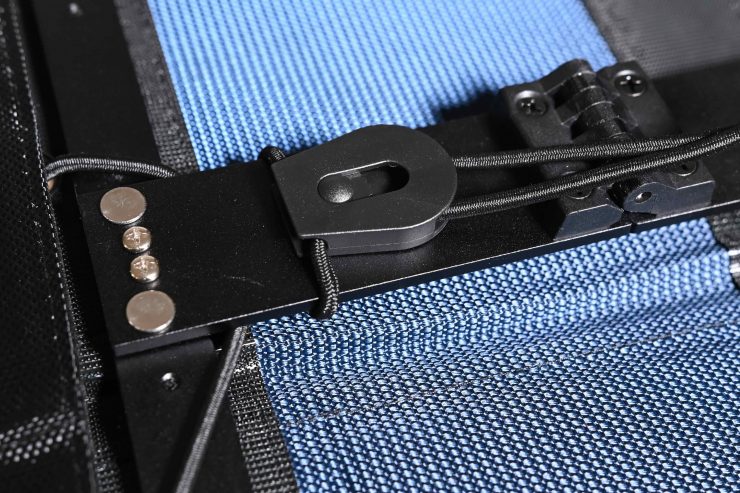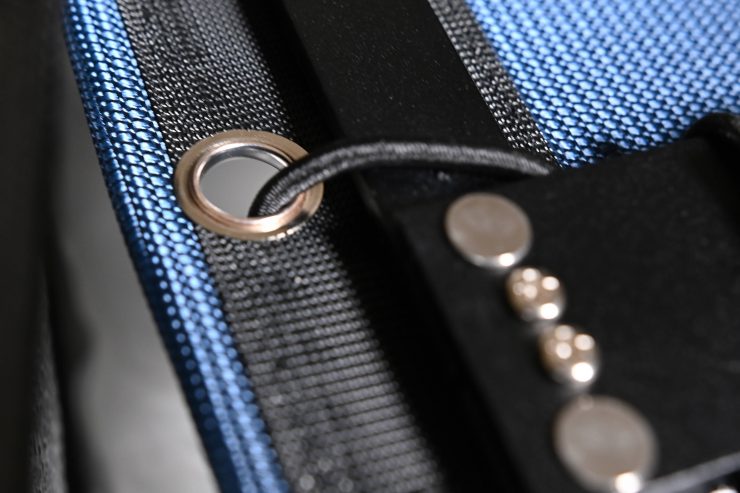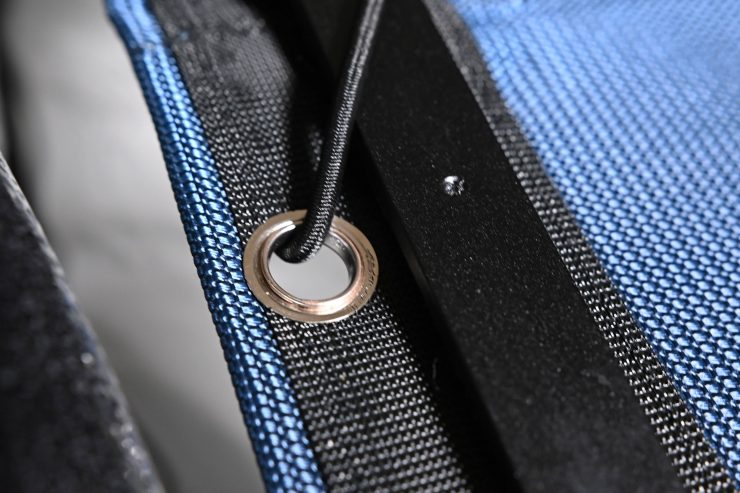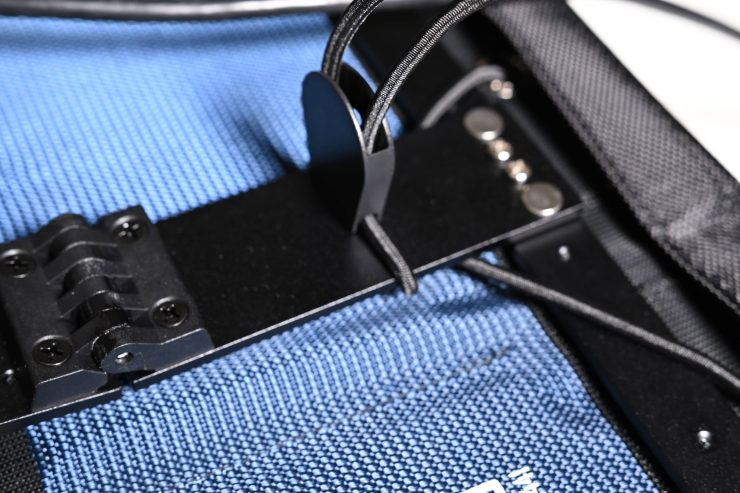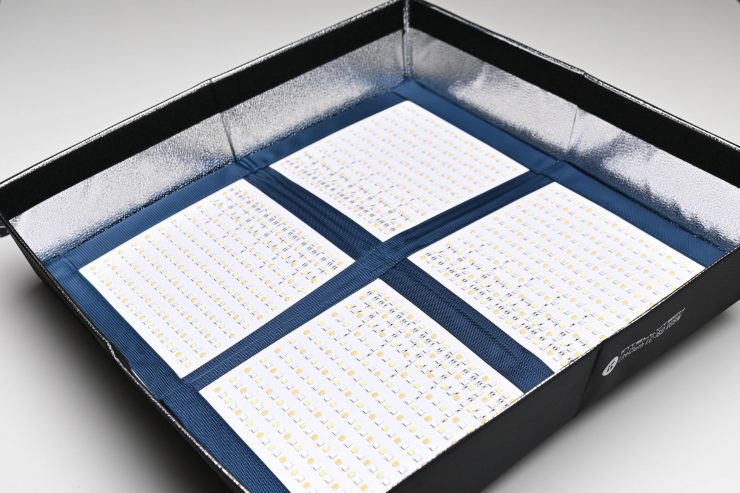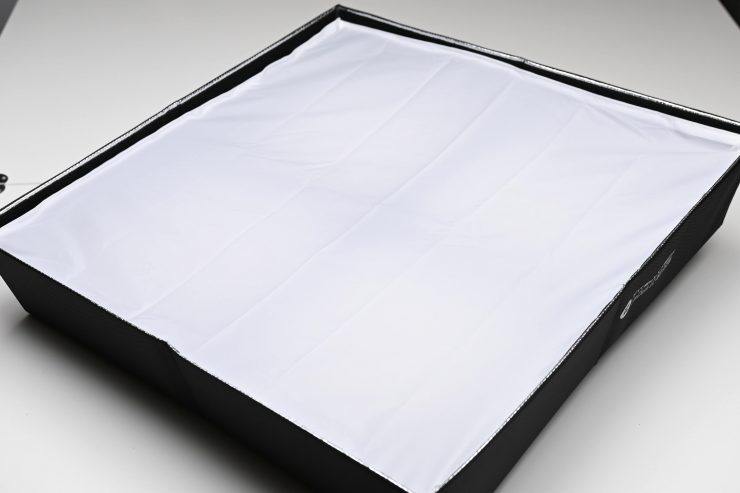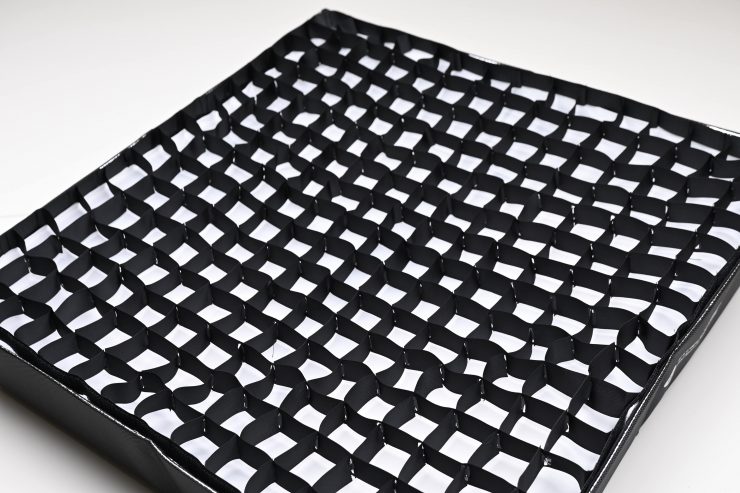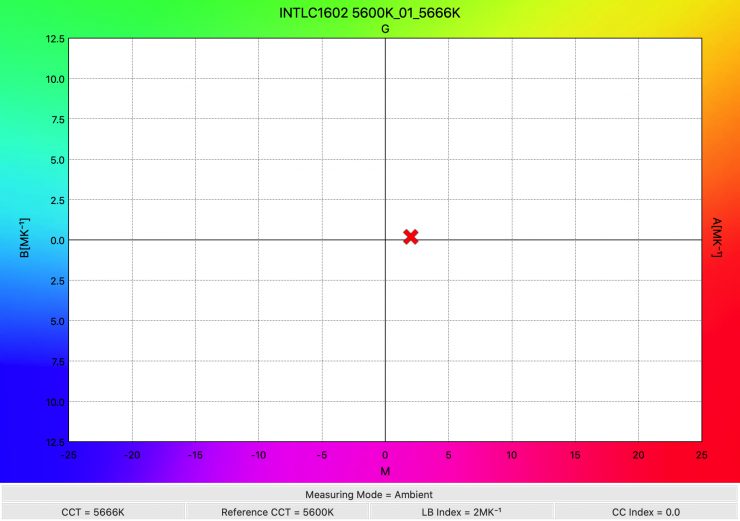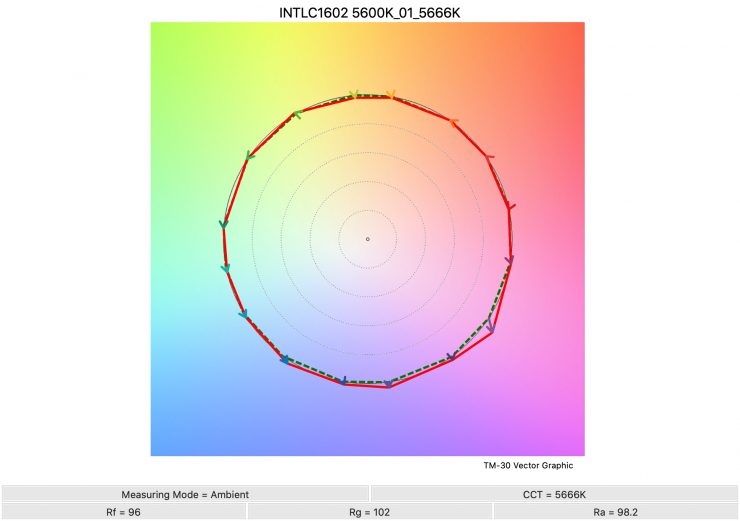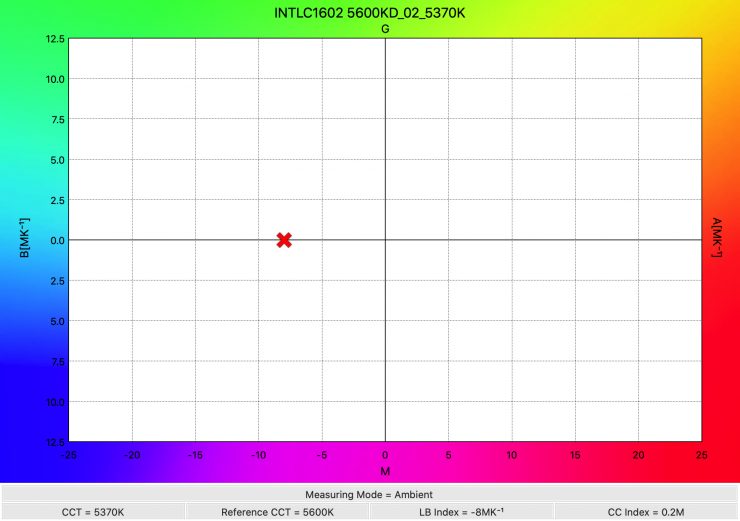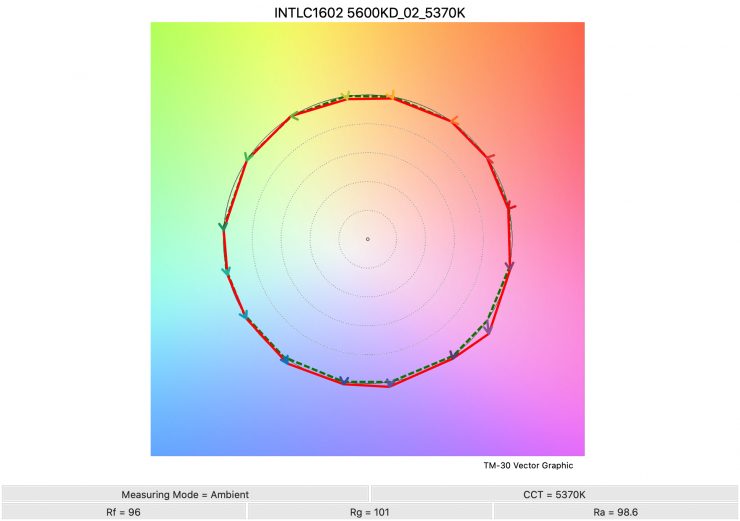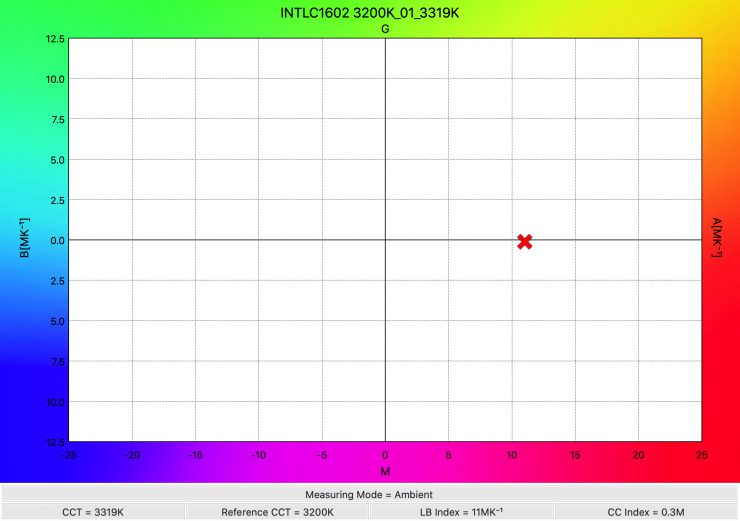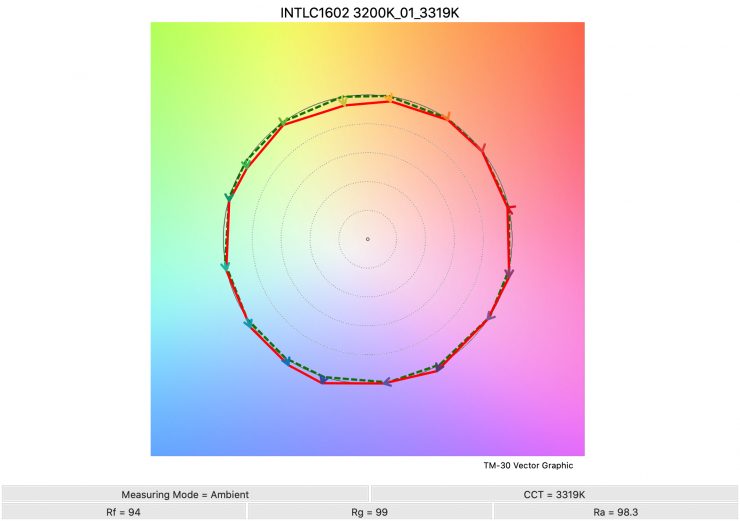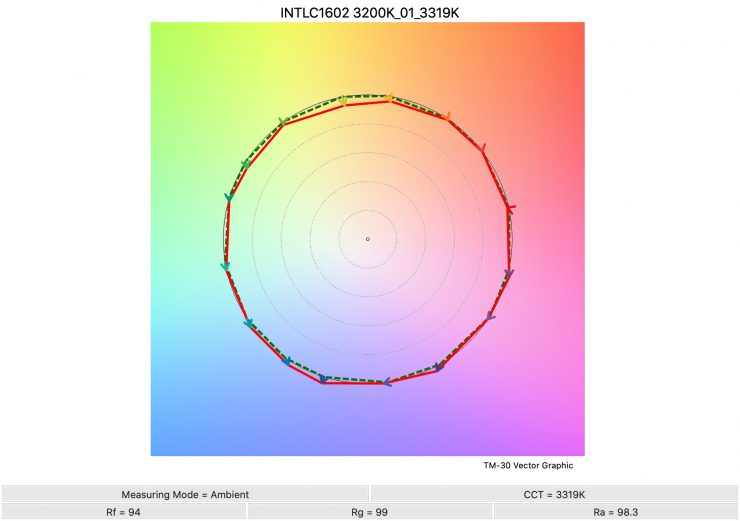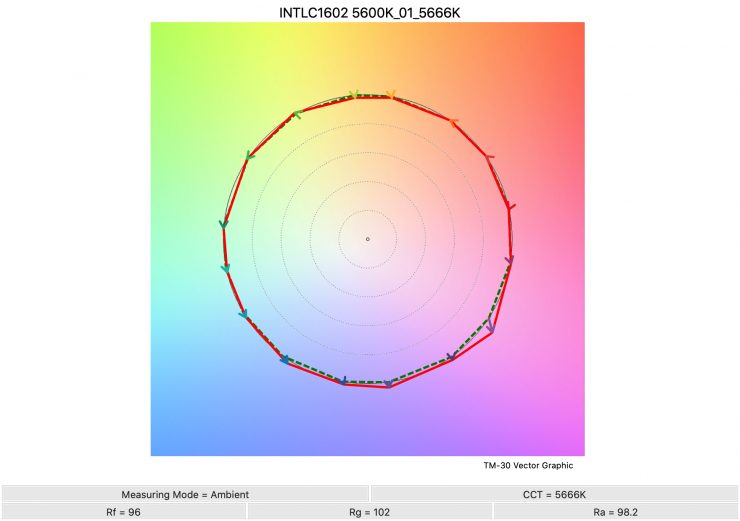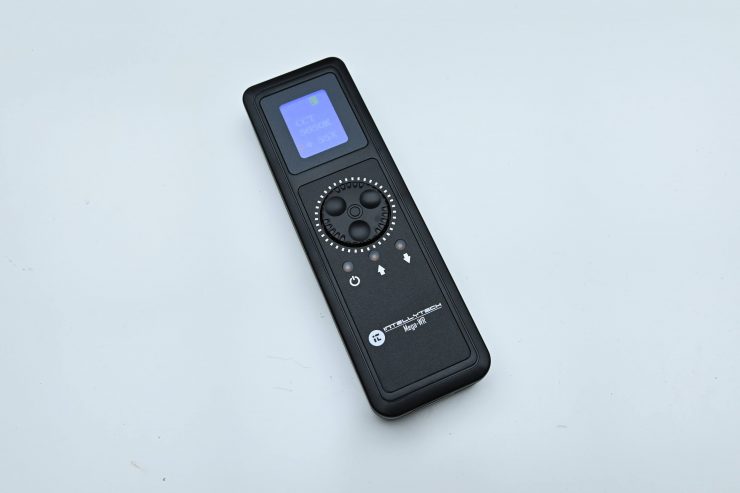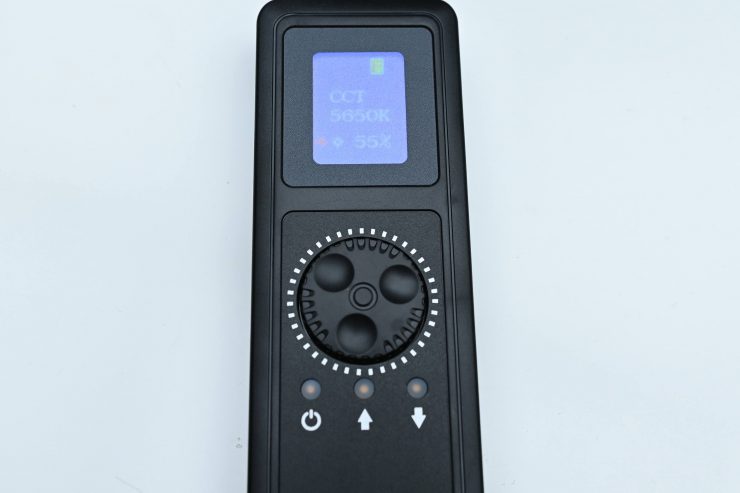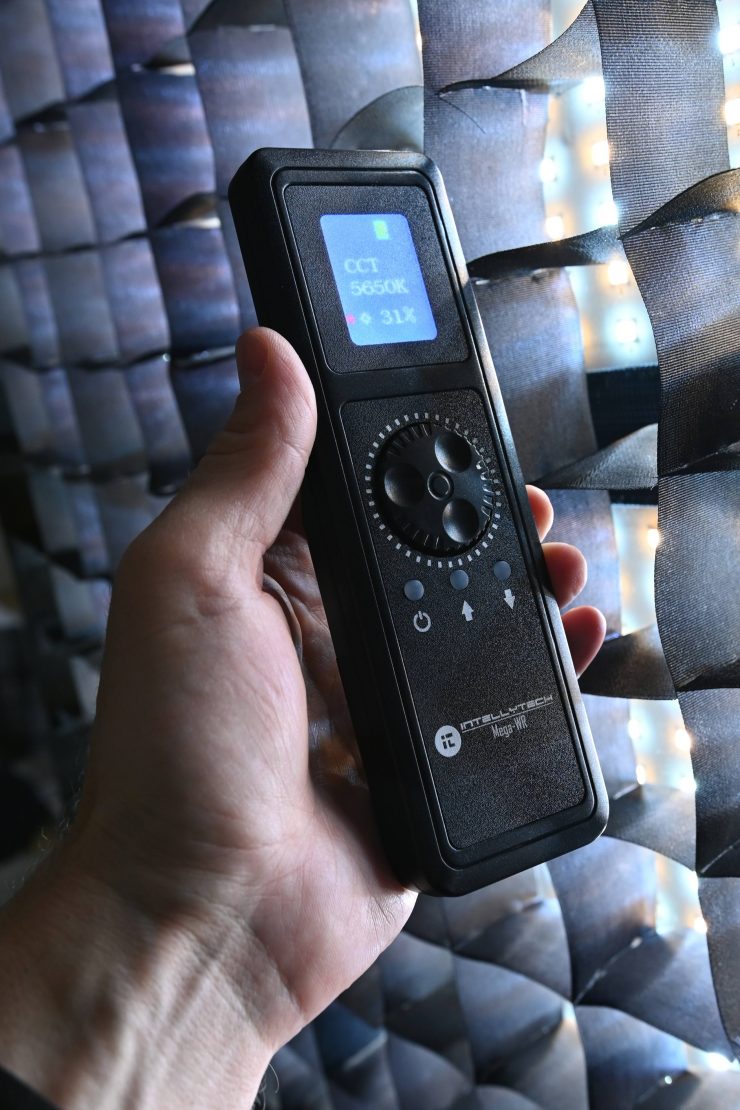Intellytech recently announced LiteCloth 2.0, a series of new foldable and bendable LED mat lights. These are a follow up to the original LiteCloth series.
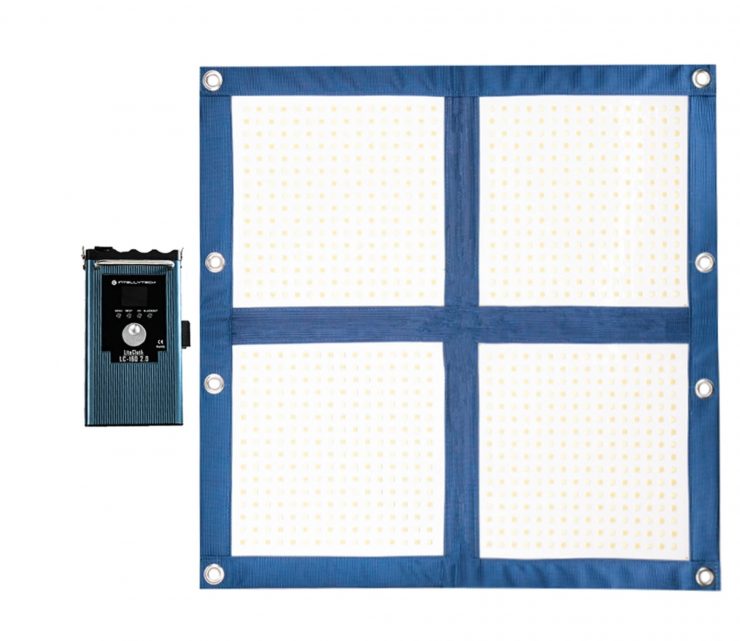
LiteCloth 2.0 is available in the following models:
- LC-160RGBWW 2.0 $1,199.00
- LC-160 2.0 $899 USD
- LC-120 2.0 $749 USD
- LC-100 2.0 $599 USD
- LC-50 2.0 $499 USD
So what’s new?
- New All-in-one Control Box – The new 2.0 LiteCloth controllers now have the AC built-in, allowing for a faster and simpler setup.
- Upgraded Cable System – Thread-less, Click in and out for fast, precise, and secure connections.
- Effects Mode Added – Each effect can be programmed according to speed and intensity.
- Bluetooth for App Control – Control a single light or a group of lights via app control.
- Grommets – For peace of mind and additional mounting options, each LC-160 and LC-120 2.0 are fitted with 8 high-strength metal grommets. **Only available on the LC-160 and LC-120 models.
- LC-160RGBWW 2.0 – Now adds green and magenta shift control & Lee / Rosco Filters. **Only available on the LC-160RGBWW 2.0 model.
It is good to see that the LiteCloth 2.0 fixtures now have an integrated all-in-one control box and Bluetooth app control.
For this review, I am going to concentrate on the LC-160 2.0 as this is bound to be the most popular of the five LiteCloth 2.0 fixtures that are available.
Erik reviewed the original LiteCloth LC-160 on the site a few years ago. You can see the review above.
What is it?
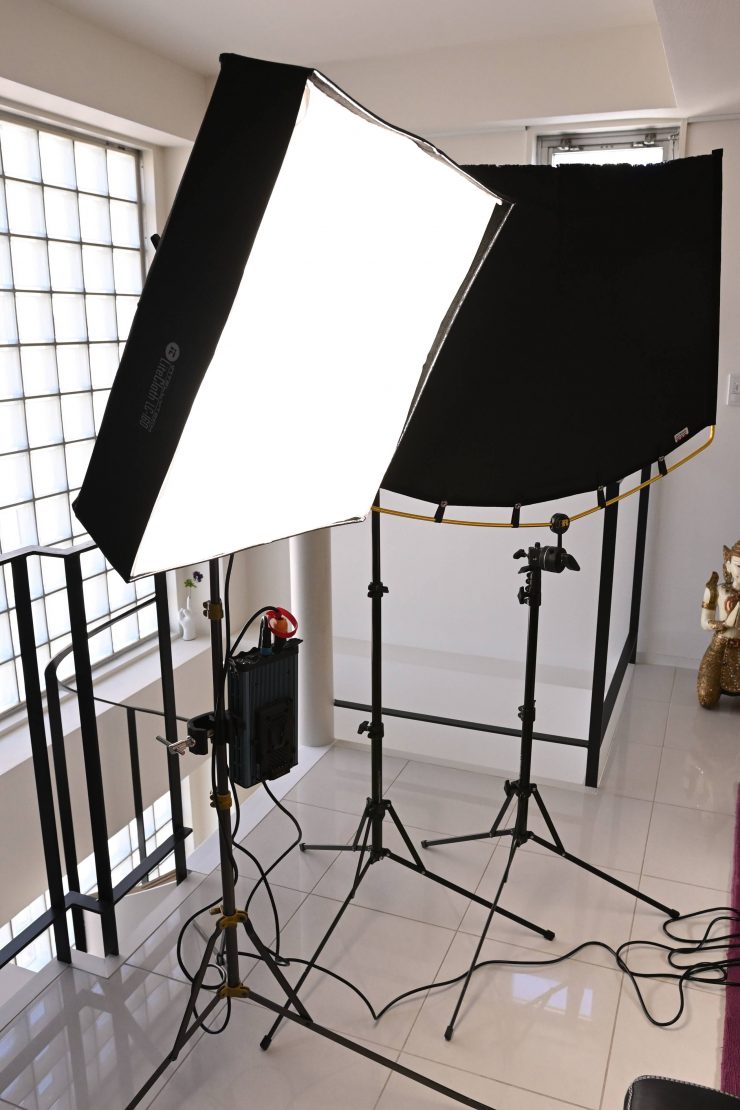
In a nutshell, the Intellytech LC-160 2.0 is a portable, versatile LED lighting solution that has a Kelvin color temperature range of 3,000K-10,000K. It can be run off a single flight safe camera battery or mains power.
What do you get?
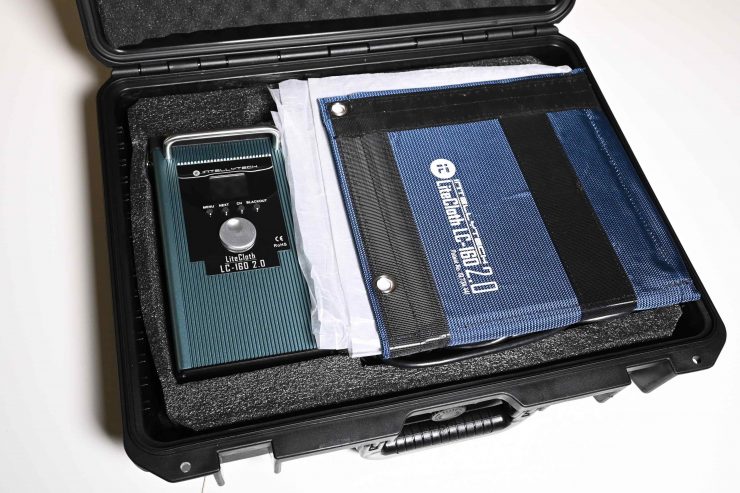
The LC-160 2.0 is sold as a complete kit. Here is what you get:
- 2×2 LED Mat
- Softbox W/ Diffuser & Grid
- Mounting Bracket & Double Jointed Silver Stud
- All-In-One Controller W/ V-Mount OR Gold Mount Battery Plate (choose one) – Works Universally 100-240V.
- Hard, Crushproof Case – 18″x16″x4.5″.
- Grommet Ties
- PowerCON Power Cable
It is nice to get an included hard case, especially if you are someone who travels a lot. Hard cases are also not cheap, so getting one included in the package certainly saves you some hard-earned cash.
Compact & easy to travel with?
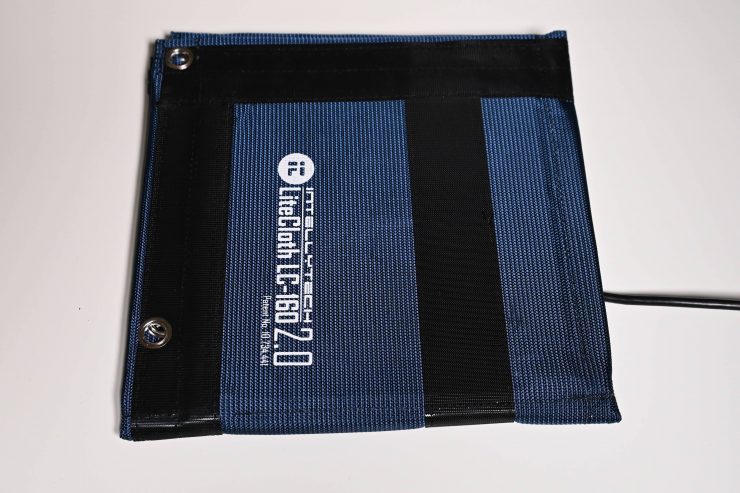
From this… 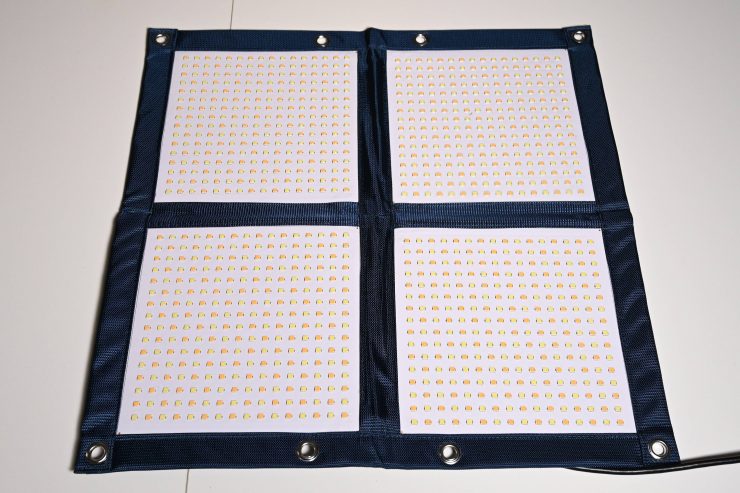
…to this
The LC-160 2.0 is a 22″ x 22″ LED Mat (2’x2′ W/ included softbox) that folds down to a 12″ x 12″ square.
The light is essentially four 1×1 panels that are combined to create a single larger lighting source.
The LC-160 2.0 has a firm backing behind the Mat, but you can fold it down at its collapsible cross-sections. This form factor allows for the light to be set up quickly without the need for a giant metal frame or x-bracket. More on the included frame system later.
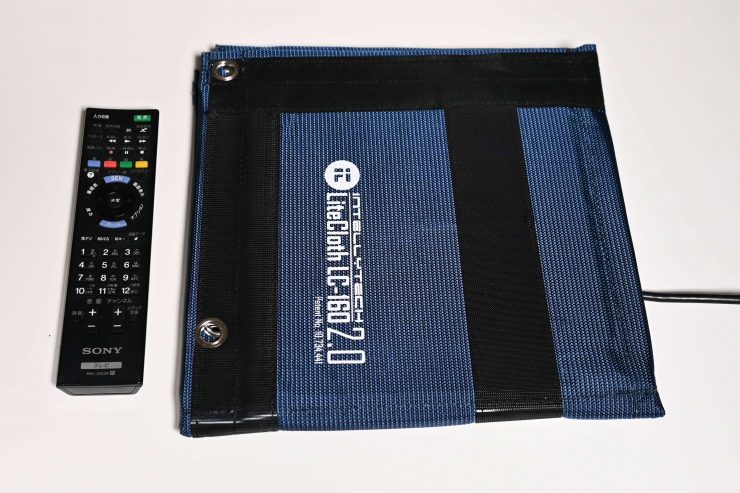
The 2′ x 2′ Light Kit takes up less space than a conventional 1′ x 1′ panel but it provides you with a larger lighting source and more flexible placement options.
The LC-160 2.0 with the softbox, honeycomb grid, and the mounting bracket doesn’t weigh that much, which allows you to fly it out on a C-stand arm.
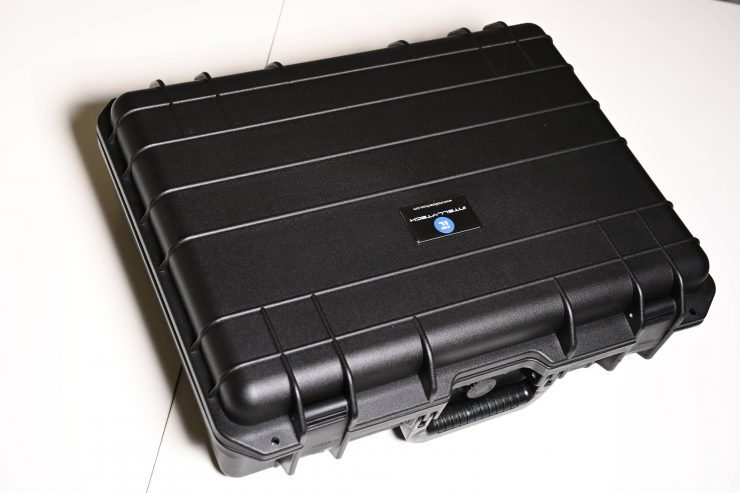
The included hard case with all of the accessories weighs in at 9.1 kg (20 lb). If you wanted to save on weight, you could remove the components from the hard case and put them into another bag. I personally think 9kg is not too heavy, especially if you are checking the light in on a flight.
Power Draw
You can power the light via AC or battery. You can choose either a V-Mount or Gold Mount battery plate. The light draws 160W. Having a power draw of 160W means you can run it at 100% output from a flight safe battery. This is important for traveling shooters who need to take lights on location where there may not be any access to mains power.
In an age where we are seeing more and more lights coming out that have very high power draws, it is nice to see a fixture that you can still easily run off a single battery.
Integrated Controller & Power Supply
As I just mentioned, the light comes with a controller with a built-in V-Lock or AB Gold Mount battery plate depending on which version you choose.
It is nice that Intellytech has done away with the separate AC power supply that was part of the original LiteCloth series. Now, the AC power supply is built into the controller box.
There is a small adapter on the side of the controller/power supply that allows you to place it onto an optional mounting adapter that can be attached to light stands.
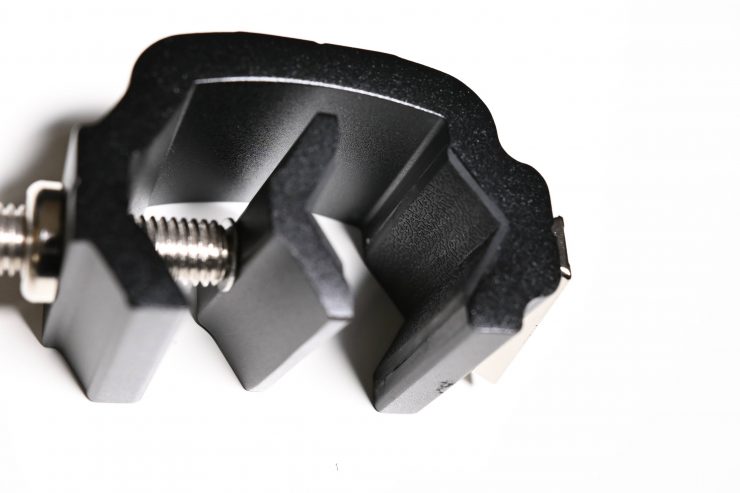
The only small complaint I have about the optional mounting adapter is that there is no rubber on the inside of the clamping mechanism and I found it ends up scratching your light stands.
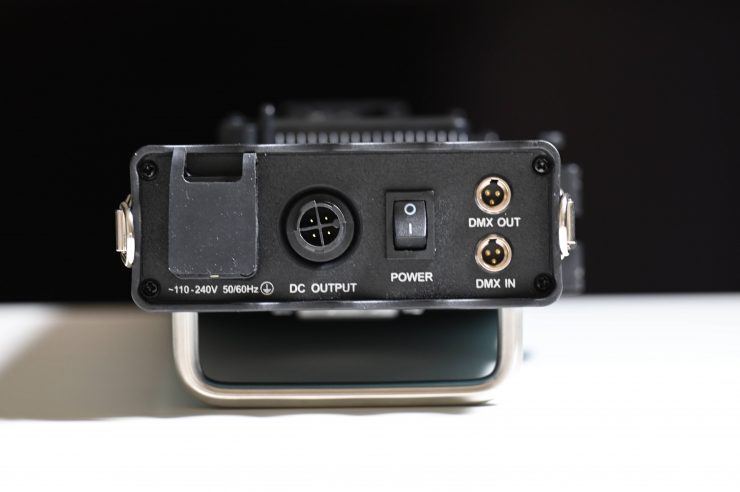
Having a single box instead of a controller and an AC power supply makes it a lot quicker to set up and you get rid of another chain in the link.
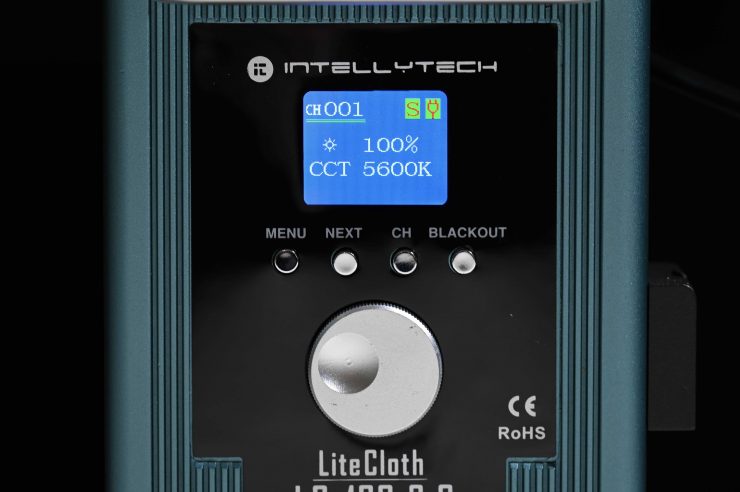
The controller is reasonably well made and I think it will be durable enough for most people’s applications. While there is nothing overly special about it, it is clearly laid out which makes it intuitive and straightforward to use.
You can make Kelvin color temperature adjustments in blocks of 50K. You can dim the light from 0-100% in 1% increments.
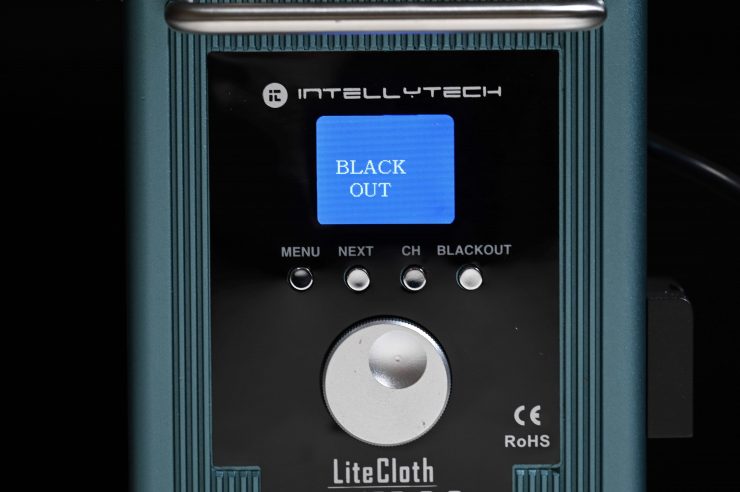
I like that Intellytech has included a ‘Blackout‘ button that allows you to turn the light off, but still have every powered up.
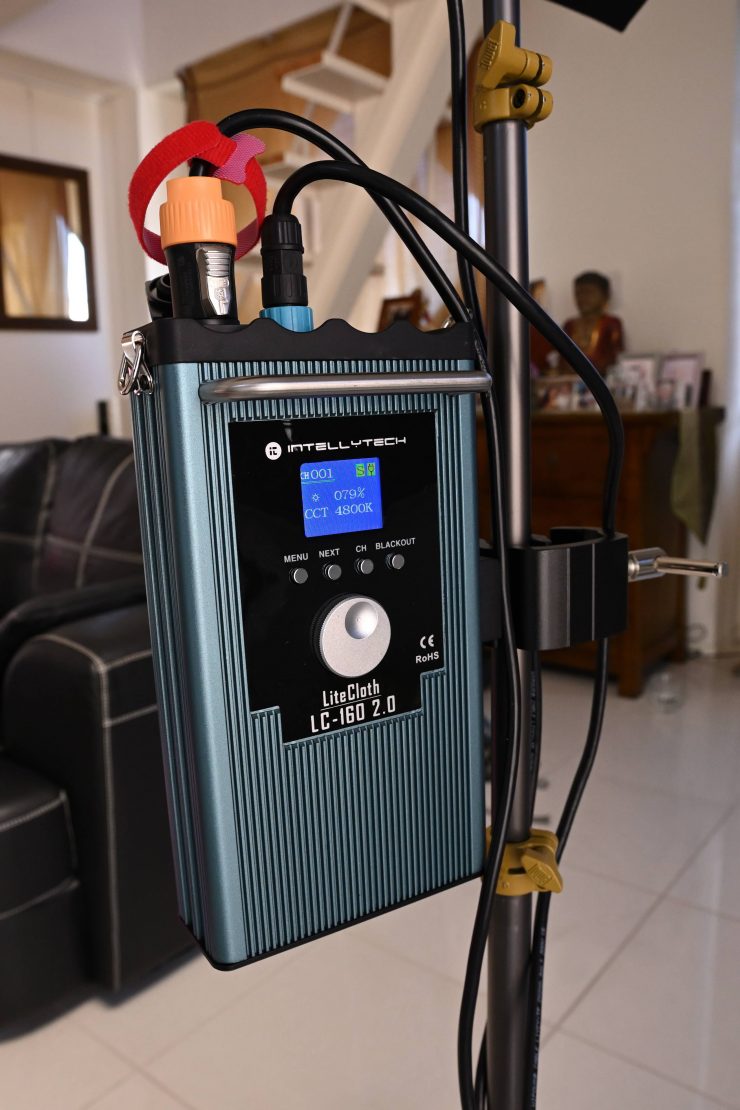
In a nice touch, the controller has built-in circuit protection, so if you try and use it with an incompatible battery it will shut itself off.
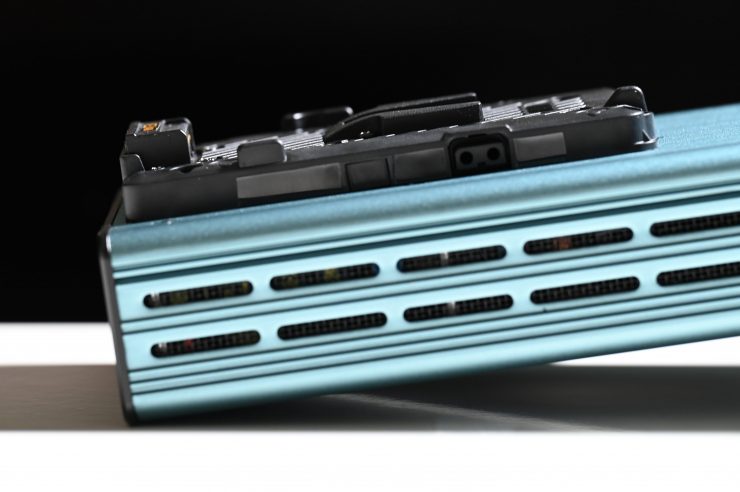
The controller’s battery plate also has an additional D-tap outlet on it if you need to power another device.
Flexible and foldable LED mats are great because they are compact and lightweight, but they still require power like any other light. They can’t magically produce a lot of output without a fairly large power supply.
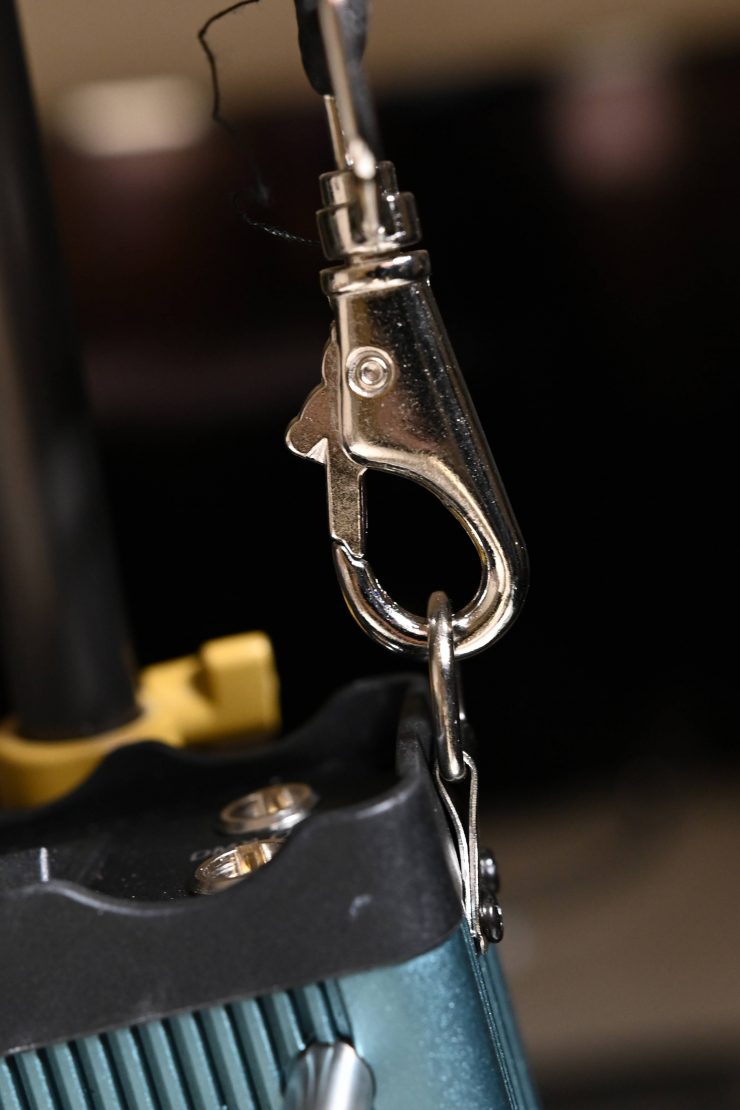
The controller/power supply is relatively lightweight (1.6 kg / 3.5 lb) and you can use the included lanyard to attach it to a light stand if need be.
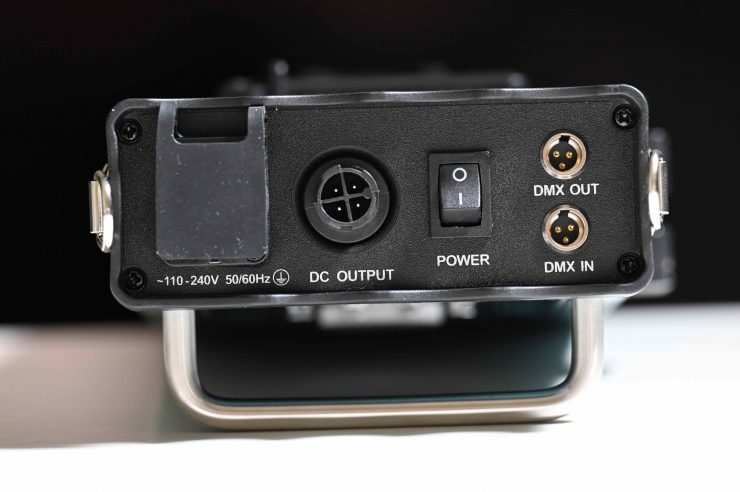
The light can be set up to a DMX512 board for studio use. Additionally, the fixture can be controlled via the optional LC-WR Wireless Remote. You can choose to control the fixture individually, or by syncing multiple lights together for simultaneous control.
Bluetooth App Control
It is nice to see that Intellytech finally has Bluetooth app so you can control a single Litecloth 2.0 light or groups of Litecloth 2.0 fixtures via the Intellytech LiteSync app.
I wasn’t able to test out the app as currently there is only an Android version available. The iOS version won’t be available till sometime in the middle of this year.
Mounting
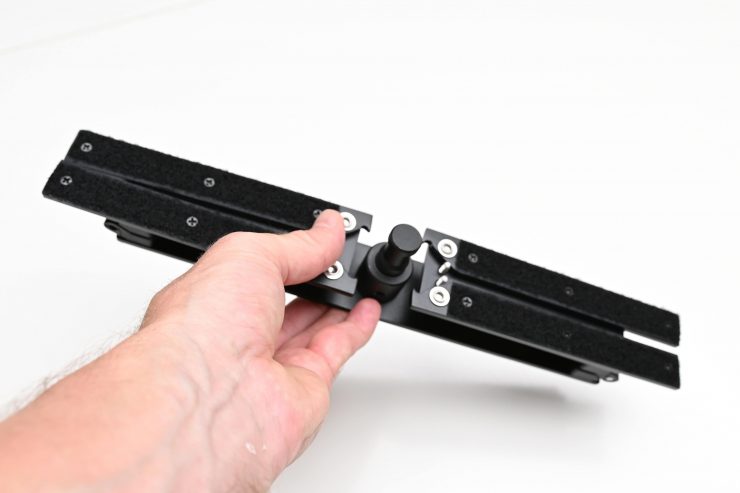
The biggest pain with most flexible LED lights is it comes to mounting. I have seen some pretty bad designs over the years, and there are only a handful of lights that have a half-decent mounting solution.
The Intellytech uses a nice robust mounting frame that folds down into a compact size for storage and transport. It opens up and there is velcro on the backside of the arms.
The included mount secures to the rear of the mat via a special high-strength Velcro.
The included mounting bracket is very heavy duty and it does allow you to angle the light in a lot of directions.
Set-Up Time & Usability
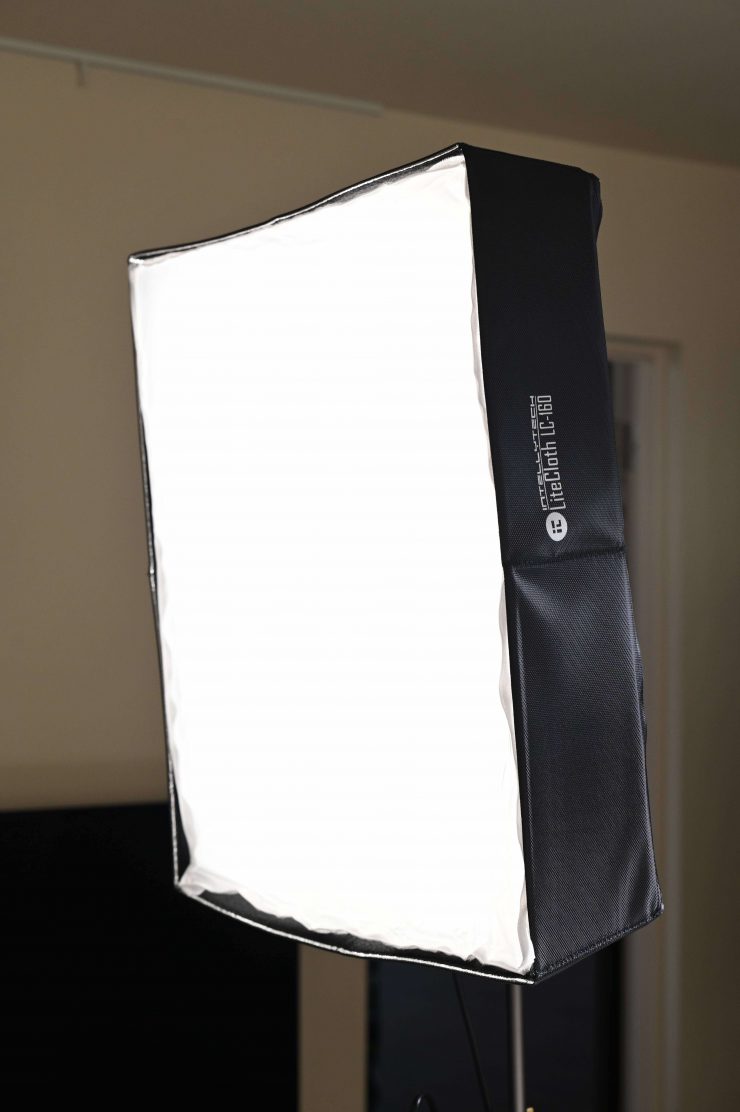
The biggest downside of using most flexible or foldable LED lights is that they are a pain to set up. You normally have to construct up frames and mounts and then hook them up to controller units and power supplies.
If you are working by yourself or in a small crew you need to be able to set up lighting quickly. The Intellytech, like most flexible LED lights, does require a few steps to set it up. I do like the design of the mounting bracket because it allows you to fold it down and keep it nice and compact. You also don’t need to construct it like some other lights that are out there.
The light is only attached to the bracket via velcro and nothing else. If I lifted it up and held it horizontally from the frame, it starts to come off the velcro in places.
If you want to mount it more securely, or if you need to directly mount it overhead people, you need to use the grommet ties. I. I found myself just using the grommet ties all the time because I don’t want anything falling down regardless of where I have placed the light.
The softbox frame, diffuser, and honeycomb grid are all pretty straightforward to attach. What you do need to bear in mind is that it is probably going to take you around 5-7 minutes to set up everything from scratch.
As the Intellytech is quite lightweight, you could attach it to a wall or a ceiling with some tape if need be. While this may not be the best option for obvious reasons, it can still be done. In the past on assignments in countries like India I have often gaffer taped flexible lights to walls to hide them from view.
The great aspect of flexible lights is your ability to shape them and manipulate them to create unique light sources.
Built-In Effects
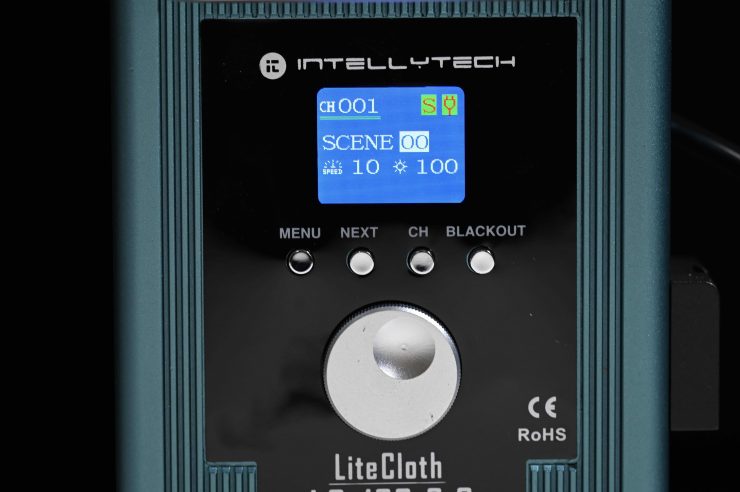
The light has quite a few effects that you can choose from. While I don’t personally use effects that often in my work, it is nice to have them available on tap if you need them, especially in a portable, battery-powered fixture.
Below are the effects that you can choose from:
- Police Lights
- Ambulance
- Fire Truck
- Lightning 1
- Lightning 2
- HSI Demo (Slow)
- HSI Demo (Fast)
- TV Screen
- Candle
- Paparazzi
- Strobe
- High/Low Beam
- Double Flash (Hazard)
- Red Flash
- Green Flash
- Blue Flash
- Party 1
- Party 2
Output & Color Temperature Accuracy
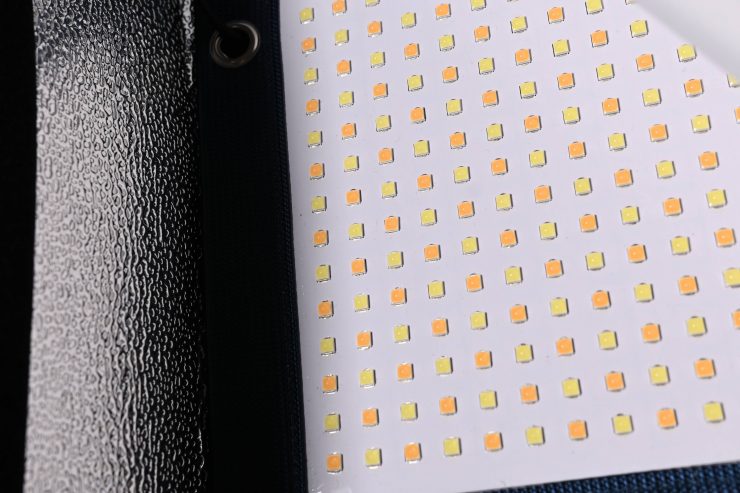
A big factor for a lot of people when buying a light is how much output it can produce. Intellytech claims that the light puts out around 5,725 Lux / 532 FC @ 3′ (91cm) when it is set at a mixed color temperature. Well, let’s put that to the test. I tested the lights output at a variety of Kelvin color temperatures both running on mains and battery power using a Sekonic C-800 at a distance of 1m (3.28ft) in a controlled environment; you can see the results below.
5600K
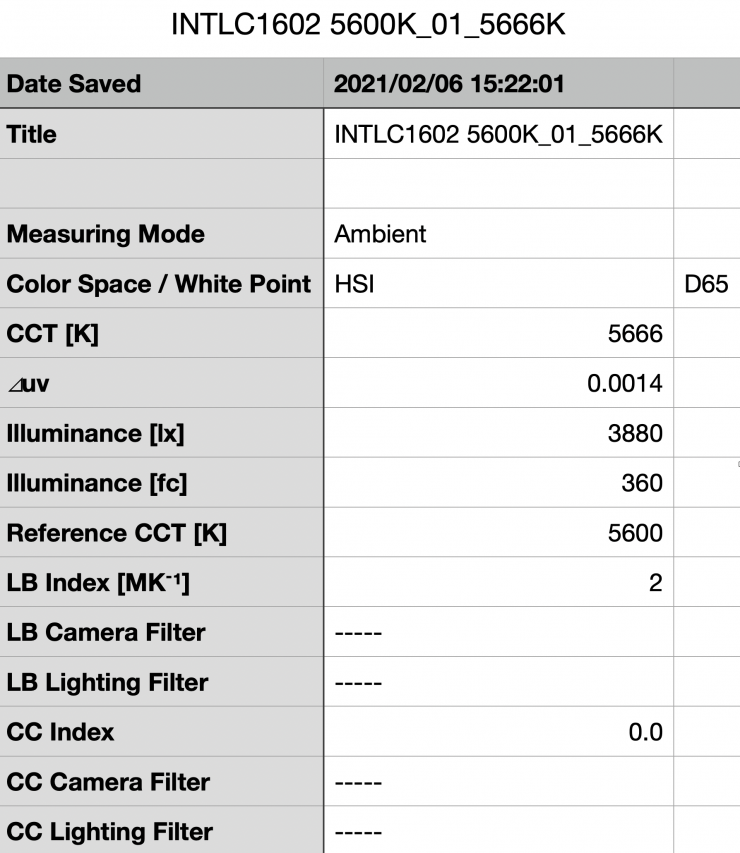
Above you can see the LC-160 2.0 recorded an output of 3880 lx / 360 (fc) when set at 5600K and run off mains power. This output was not as high as I was expecting. When Erik reviewed the original LC-160 he found that it had an output of 3640 lx at 5600K. This tells me that the output hasn’t really changed from the previous version.
3880 lx is hardly an earth-shattering figure in 2021 and you will find there are quite a few 1×1 RGBW lights that will give you a far greater output. However, you need to remember that the Intellytech is outputting that 3880 lx over a far wider surface area than a 1×1 panel light.
The LC-160 2.0 produced a Kelvin color temperature of 5666K, which was a very good score. As a comparison, the original LC-160 had a Kelvin color temperature of 5592K.
5600K Battery Power
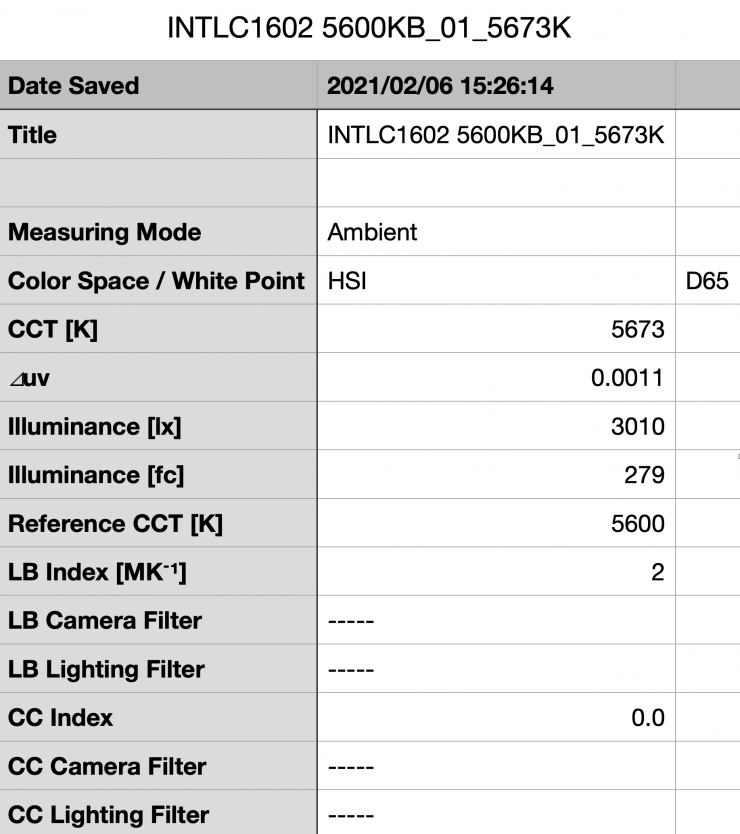
I also tested how much output the light had when being run off a V-lock battery. Usually, lights have less output when being run off batteries as opposed to mains power. The LC-160 2.0 had an output of 3010 lx (279 fc) at 5600K. That was 22.4% less than when it was run off mains power. This is quite a lot of output that is lost and you need to take this into account if you are running the light off a battery.
Output with Softbox
As the light also comes with a softbox with diffusion I wanted to do another test to see how much output is being lost when you use it. The output was measured at a distance of 1m from the front of the softbox.
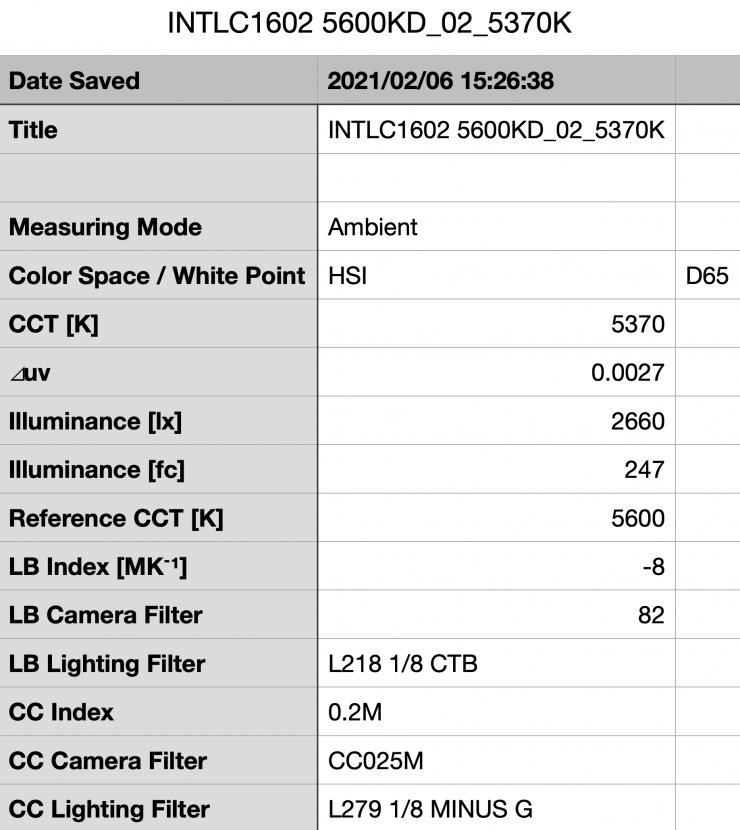
Above you can see the light recorded an output of 2660 lx / 247 (fc) when set at 5600K with the soft box and run off mains power. This was 31.4% less than when the light was used without the softbox.
The LC-160 2.0 produced a Kelvin color temperature of 5370K, which was a lot lower than when the light was used without the softbox. This tells me that the softbox is affecting the Kelvin color temperature. Again, this is something you need to be aware of when using the light.
3200K
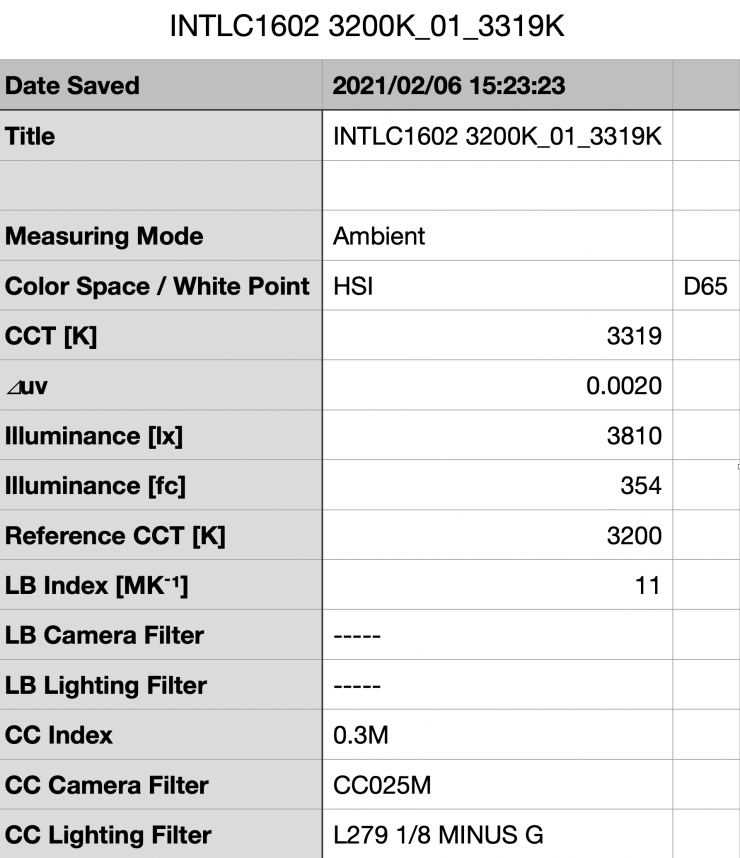
Above you can see the light’s output when it was set at 3200K. It produced 3810 lx (354 fc), which is just 1.8% less than the 3880 lx it produced at 5600K. When Erik reviewed the original LC-160 he found that it had an output of 3280 lx at 3200K. This tells me that the output at 3200K is slightly higher than it was on the original version.
As far as Kelvin color temperature accuracy goes, it recorded a reading of 3319K. While this reading was not, bad, it wasn’t quite as good as when the light is being used at 5600K.
How does it perform at various Kelvin color temperatures?
Summary of results
| OUTPUT | KELVIN COLOR TEMPERATURE | |
| 3000K | 3940 lx | 3185K |
| 3200K | 3810 lx | 3319K |
| 4500K | 3850 lx | 4588K |
| 5600K | 3880 lx | 5666K |
| 6500K | 3900 lx | 6637K |
| 8000K | 3990 lx | 8193K |
| 9999K | 4310 lx | 10907K |
The light has a reasonably consistent output across its Kelvin color temperature range. Between 3000K to 9999K the output only varies by 11.6%.
The results also show me that the light is pretty accurate when it comes to Kelvin color temperature reproduction across its entire range. The overall consistency was nice to see.
CC Index & ⊿uv
The CC Index displays the CC correction value and whether any magenta or green need to be added or subtracted. 1 CC corresponds to 035 Kodak CC values or 1/8 Rosco filter values. Any reading less than +1.00 or -1.00 and you’re probably not going to need to make any kind of adjustment. The ⊿uv is the value to show how much this light is away from being an ideal light source (black body radiation = incandescent lamp). As with the CC Index you want this number to theoretically be zero. Kelvin is not a linear value, so we need to convert from Kelvin to MK-1 to compare the values of color temperature. To calculate from Kelvin to Mired is MK-1= 1*1000000/Kelvin. While this may sound confusing, it is the only way of measuring if the Kelvin shift is significant enough to warrant having to use a filter for correction. Below are the results for the Aputure:
Kelvin Vs MK-1
| Kelvin | Difference in K | MK-1 | Difference in MK-1 | |
| SET VALUE | 3000K | 0 | 333.33 | 0 |
| ACTUAL READING | 3185K | 185 | 313.97 | -19.36 MK-1 |
| SET VALUE | 3200K | 0 | 312.5 | 0 |
| ACTUAL READING | 3319K | 119 | 301.29 | -11.21 MK-1 |
| SET VALUE | 4500K | 0 | 222.22 | 0 |
| ACTUAL READING | 4588K | 88 | 217.95 | -4.27 MK-1 |
| SET VALUE | 5600K | 0 | 178.57 | 0 |
| ACTUAL READING | 5666K | 66 | 176.49 | -2.8 MK-1 |
| SET VALUE | 6500K | 0 | 153.84 | 0 |
| ACTUAL READING | 6637K | 137 | 150.67 | -3.17 MK-1 |
| SET VALUE | 8000K | 0 | 125 | 0 |
| ACTUAL READING | 8193K | 193 | 122.05 | -2.95 MK-1 |
| SET VALUE | 9999K | 0 | 100.01 | 0 |
| ACTUAL READING | 10907K | 908 | 91.68 | -8.33 MK-1 |
These figures might look confusing, but what it tells me is that the light is could be a lot more Kelvin color accurate at 3200K and below. Any MK-1 score that is under -9/9 means you wouldn’t have to use any color correction gels. With this light at 3200K and 3000K, you would need to correct the light by either making adjustments to the Kelvin color temperature on the light itself or through the use of color correction gels. Now, just because some of these scores don’t appear to be very good we shouldn’t jump to any conclusions just yet.
CC INDEX & ⊿uv
| CC INDEX | ⊿uv | |
| 3000K | 0.4M | 0.0031 |
| 3200K | 0.3M | 0.0020 |
| 4500K | 0 | -0.0005 |
| 5600K | 0 | 0.0014 |
| 6500K | 0 | 0.0028 |
| 8000K | 0 | 0.0061 |
| 9999K | 0.1M | 0.0110 |
These results show me that the light doesn’t have any green or magenta bias between 4500K to 8000K. At 3200K and below it does have a slight skew towards green.
Does the light’s Kelvin color consistency change once it is dimmed down?
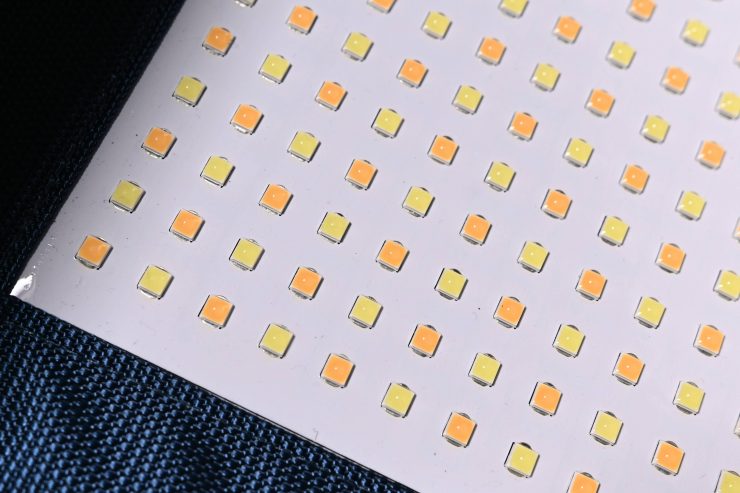
With a lot of LED lights, the Kelvin color temperature can change significantly once you start dimming the fixture down. So how does the LC-160 2.0 fare? Below you can see the performance of the light when used at 5600K.
| CCT | |
| 100% Output | 5666K |
| 75% Output | 5730K |
| 50% Output | 5694K |
| 25% Output | 5665K |
As you can see the light’s Kelvin color temperature does not alter in any significant way when it is dimmed down.
How linear is the output?
I wanted to see how linear the light’s output was, so I tested it at a variety of intensities at 5600K. Below you can see the results.
| lx | |
| 100% Output | 3880 lx |
| 75% Output | 2860 lx |
| 50% Output | 1920 lx |
| 25% Output | 1100 lx |
The results show me that the light’s output is very linear once you start dimming the fixture down. At 50% output, it had 49.6% less output than when it was due at 100% output.
Color Rendering
5600K
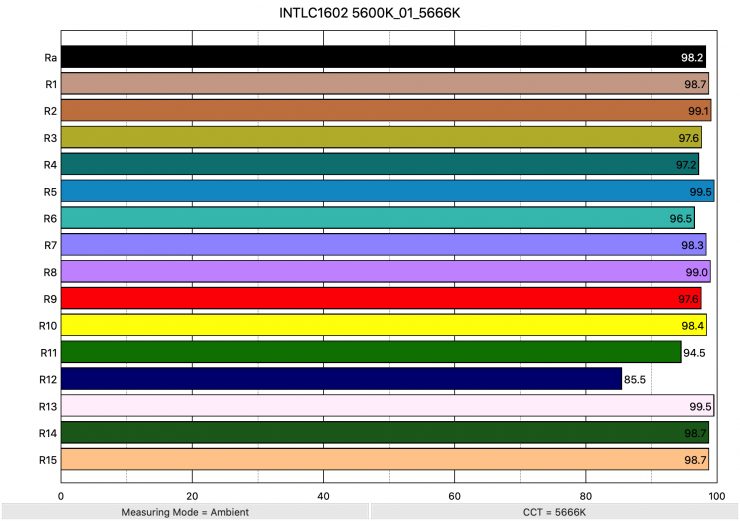
So now that we have seen how much output the LC-160 2.0 produces, how does it perform when it comes to replicating accurate colors. Above you can see that when the light was set at 5600K it recorded an average CRI (R1-R8) of 98.2 and an extended CRI (R1-R15) of 97.25. For replicating accurate skin tones it recorded 97.6 R9 (red), 99.5 for R13 (closest to caucasian skin tones), and 98.7 for R15 (closest to Asian skin tones). These are outstanding results for an LED light being used at 5600K, and it is one of the best extended CRI scores I have ever recorded.
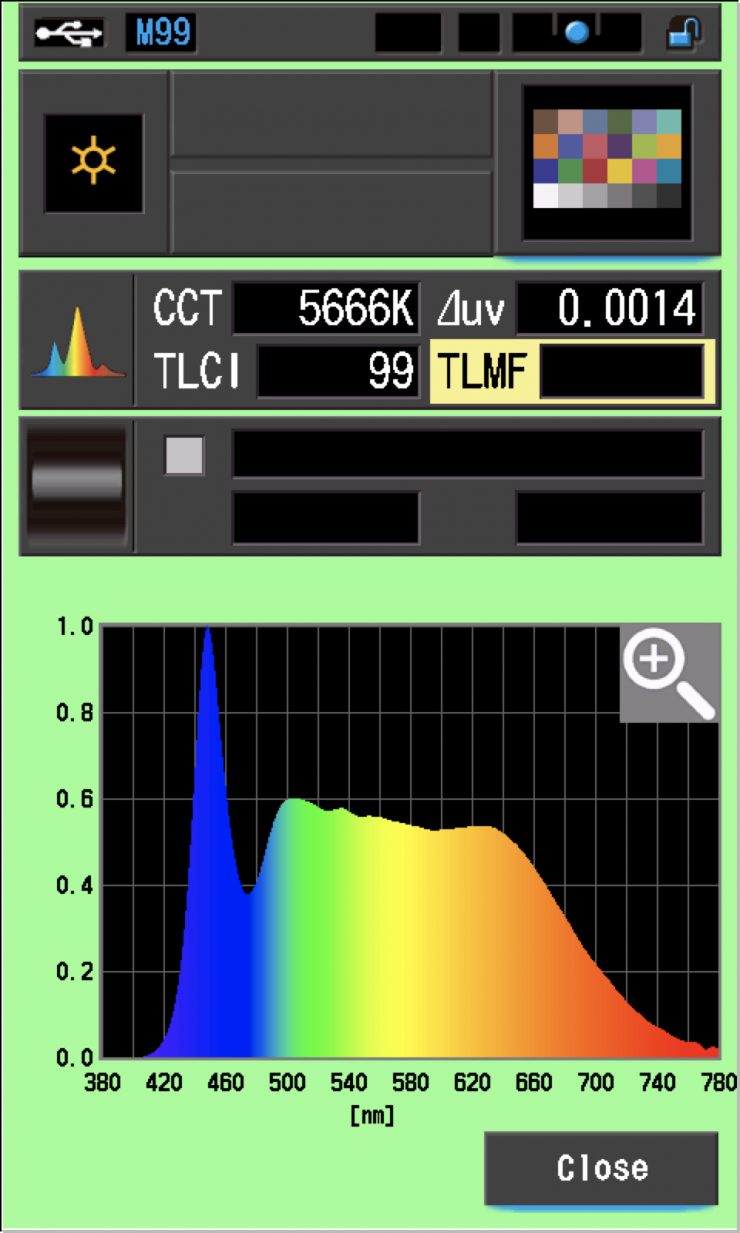
The light when set at 5600K also recorded a TLCI score of 99.
As a comparison, I compared the color rendering of the Intellytech to the Aladdin Bi-Flex2 Bi-Color LED Panel 1×2. The Aladdin has excellent color rendering scores and I personally consider it to be a benchmark for flexible LED panels.
| CRI | EXTENDED CRI | R9 | R13 | R15 | |
| Aladdin Bi-Flex2 Bi-Color LED Panel 1×2 | 98.5 | 97.54 | 96.7 | 98.6 | 98.8 |
| Intellytech LC-160 2.0 | 98.2 | 97.25 | 97.6 | 99.5 | 98.7 |
Above you can see a head-to-head comparison of the Aladdin Bi-Flex2 Bi-Color LED Panel 1×2 and the Intellytech LC-160 2.0 when used at 5600K. Despite the Intellytech being larger, it stands head-to-head with what I consider to be the industry benchmark.
3200K
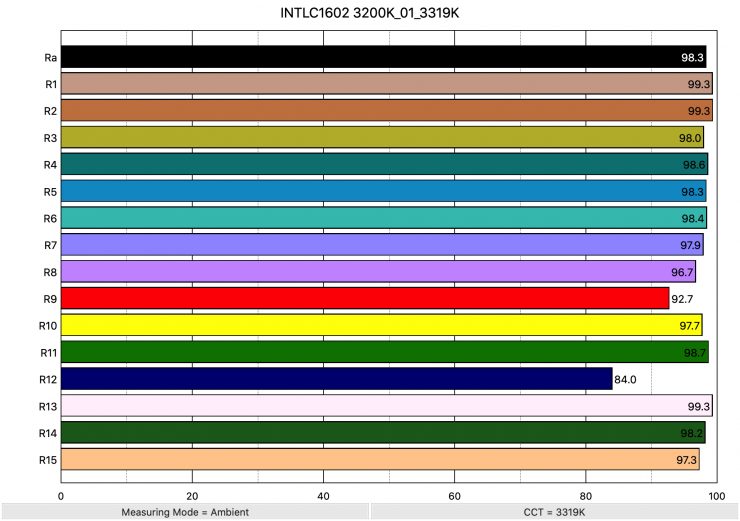
Above you can see the scores for when the light was used at 3200K. It recorded an average CRI (R1-R8) of 98.3 and an extended CRI (R1-R15) of 96.97. For replicating accurate skin tones it recorded 92.7 for R9 (red), 99.3 for R13 (closest to caucasian skin tones), and 97.3 for R15 (closest to Asian skin tones). Just like at 5600K, these are excellent results.
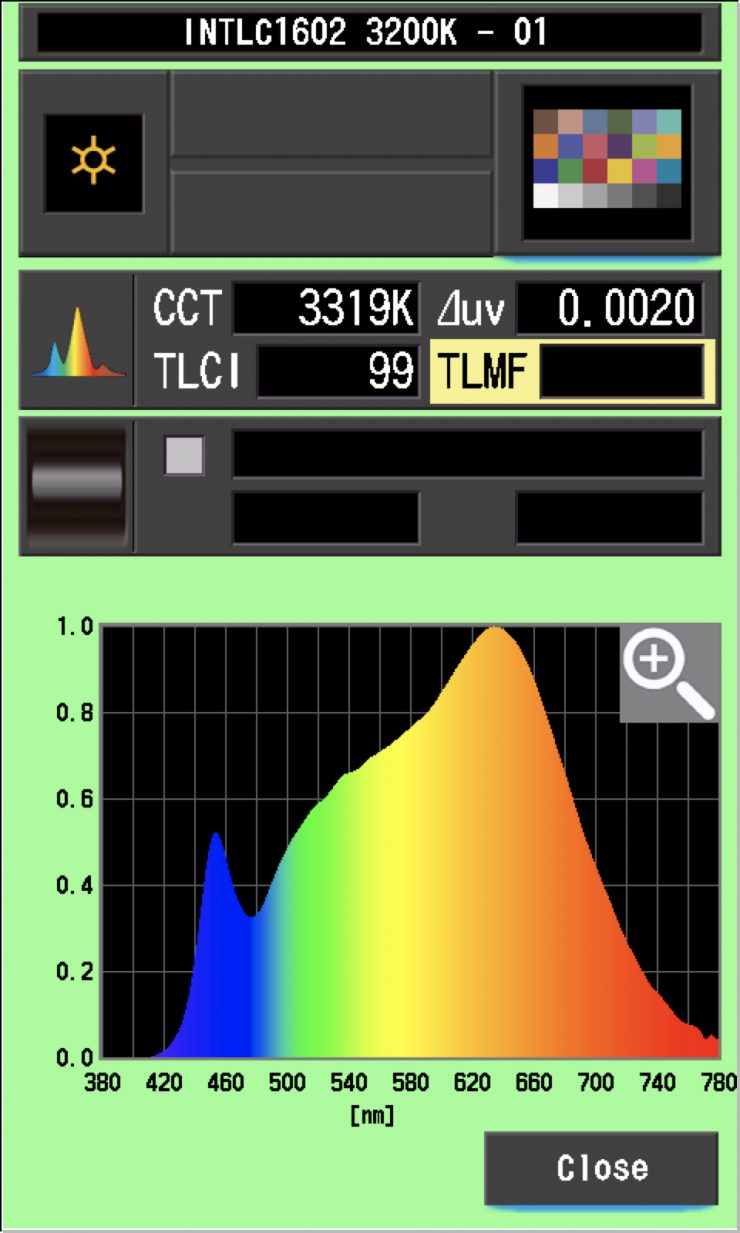
The light, when set at 3200K, recorded a TLCI score of 99.
| CRI | EXTENDED CRI | R9 | R13 | R15 | |
| Aladdin Bi-Flex2 Bi-Color LED Panel 1×2 | 98.5 | 97.54 | 96.7 | 98.6 | 98.8 |
| Intellytech LC-160 2.0 | 98.3 | 96.97 | 92.7 | 99.3 | 97.3 |
Above you can see a head-to-head comparison of the Aladdin Bi-Flex2 Bi-Color LED Panel 1×2 and the Intellytech when used at 3200K. Again, just like at 5600K the Intellytech stands head-to-head with the Aladdin.
TM-30
TM-30 is a relatively new color rendering standard that was developed to deal with the limitations of CRI. TM-30 looks at 99 individual colors. These 99 colors are categorized into seven groups: nature, skin color, textiles, paints, plastics, printed material, and color systems.
TM-30 scores go from 0 – 100. The higher the score, the more accurate a light is at producing colors. Any TM-30 Rf score in the ’90s is considered to be good. What is interesting and something that you need to be very aware of is that two separate light sources with the exact same CRI scores can render colors very differently. A light with a high CRI rating could have a low TM-30 score. Conversely, a light with a good TM-30 score could have a bad CRI score.
Now, there are two measurements associated with TM-30, Rf and Rg.
- Rf (Color Fidelity)
- Rg (Color Gamut)
With Rg value, a score below 100 indicates that the light source renders colors with less saturation than the reference source. So ideally you want this score to be above 100.
Above you can see the scores for the Astera NYX when it is used at both 3200K and 5600K. At 3200K it recorded a TM-30 Rf score of 94 and a TM-30 Rg score of 99. At 5600K it recorded a TM-30 Rf score of 96 and a TM-30 Rg score of 102.
SSI
SSI (Spectral Similarity Index) was developed by the Sci-Tech Council of the Academy. SSI gives me the ability to set any light as a standard, or use predefined standards (such as CIE D55), and then give other lights an SSI score based upon how well they will match standards such as CIE D55 measure spectral response and compare it directly against an ideal light source.
SSI is a much better way to judge an LED light than CRI or TLCI.
SSI is useful to see how well different lights will play together. As the Sekonic C-800 Spectromaster can measure SSI, I decided to test out the Intellytech to see how it performed.
3200K
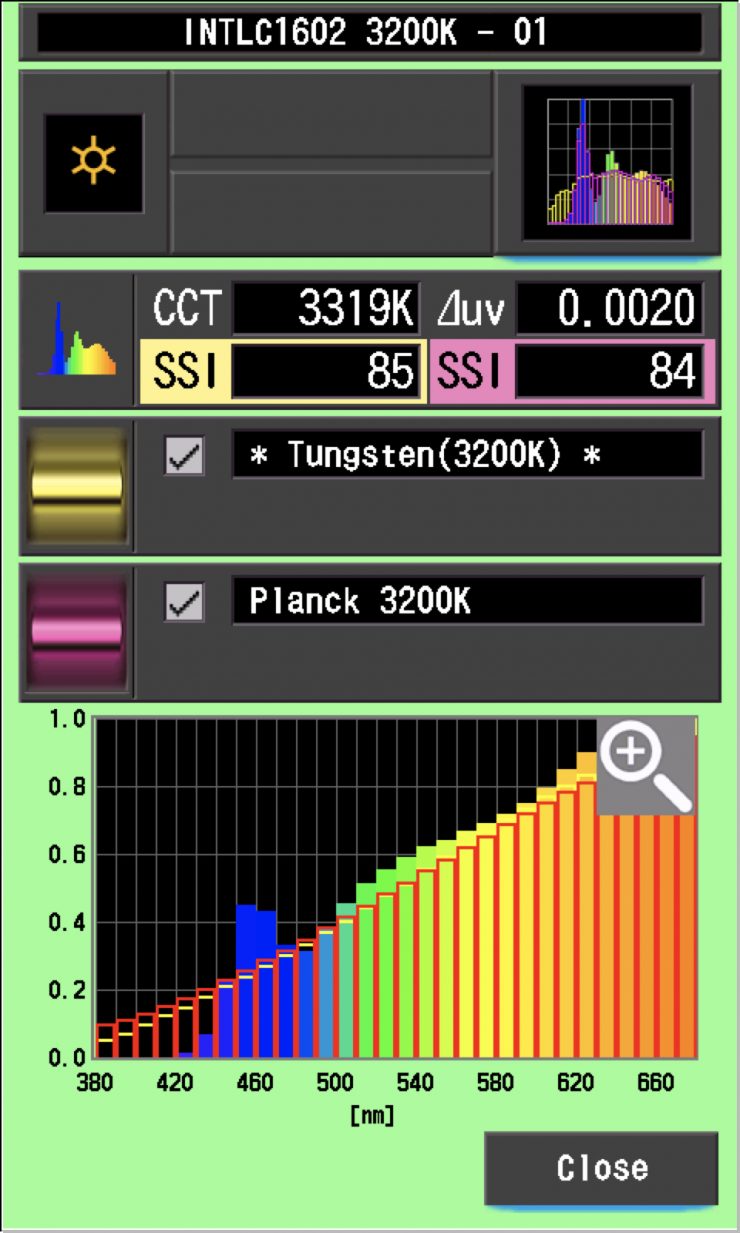
Above are the scores for the light when used at 3200K. The scores show that the light does a very good job of accurately replicating a 3200K (Tungsten) source. Any score in the mid to high 80’s is outstanding for an LED light.
5600K
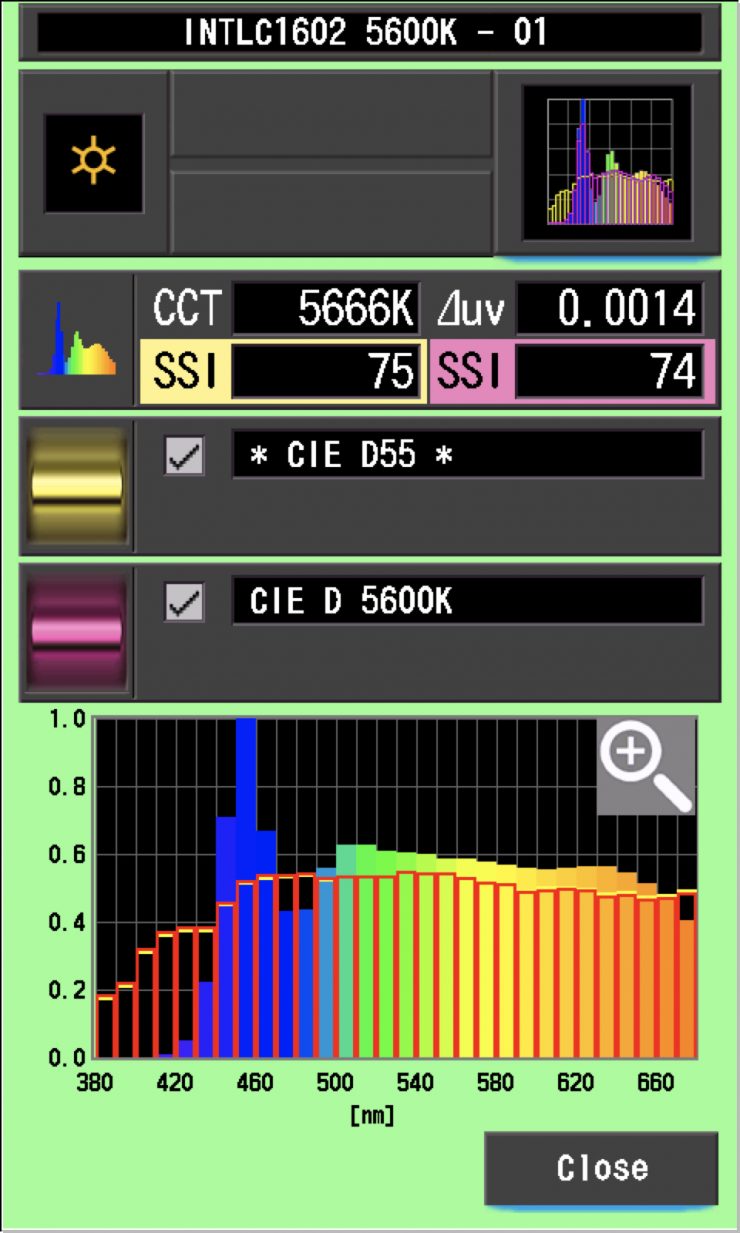
Above are the scores for the light when used at 5600K. The scores show that the light does a very good job of accurately replicating a CIE D55 source. A score in the low to mid-70s is very typical for a 5600K LED light.
The main reason we want to record SSI scores is so we can see how well they match with other lights. I was curious to see how well the Intellytech Intellytech LC-160 2.0 matched the ARRI Orbiter and Rotolight Titan X1 at both 3200K and 5600K. These are two very color accurate lights, so it will be interesting to see how well the LC-160 2.0 matches. Below you can see the results.
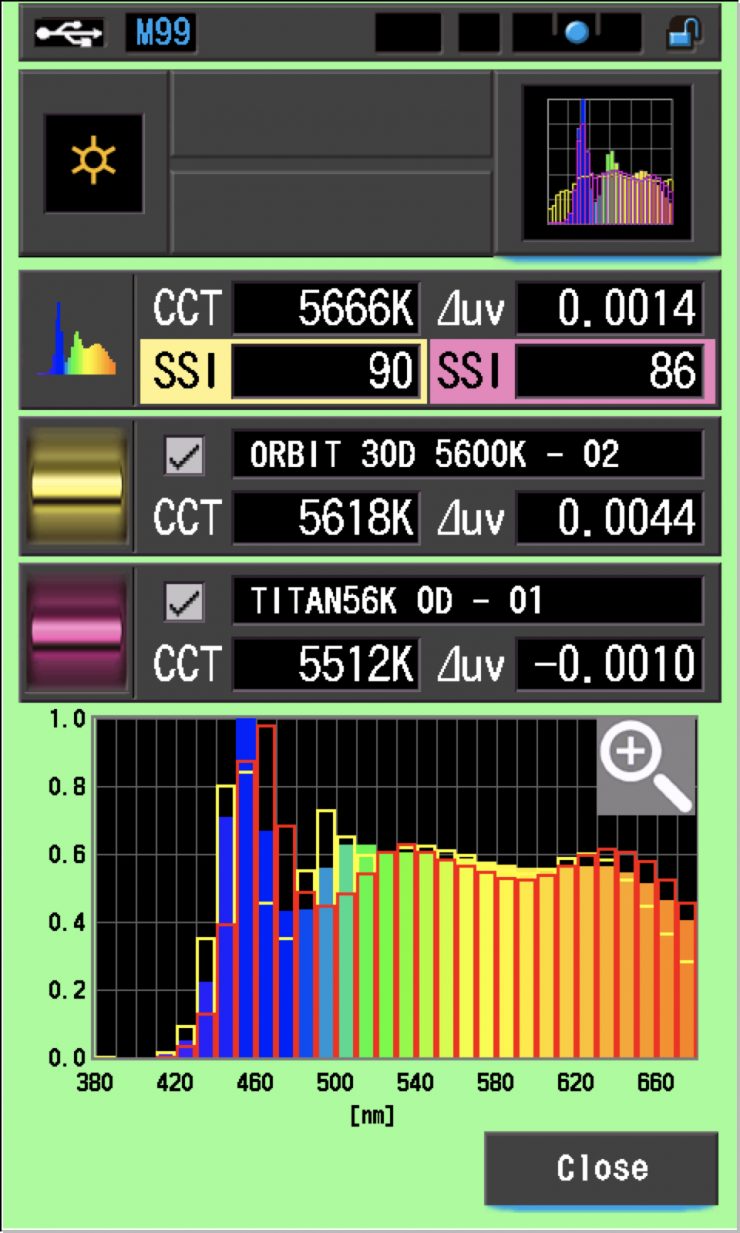
As you can see the Intellytech LC-160 2.0 and the other two lights are not a perfect match when used at 5600K. However, a score in the high 80’s or low 90’s isn’t that bad and with a bit of tweaking, you could probably get all three lights to match reasonably well.
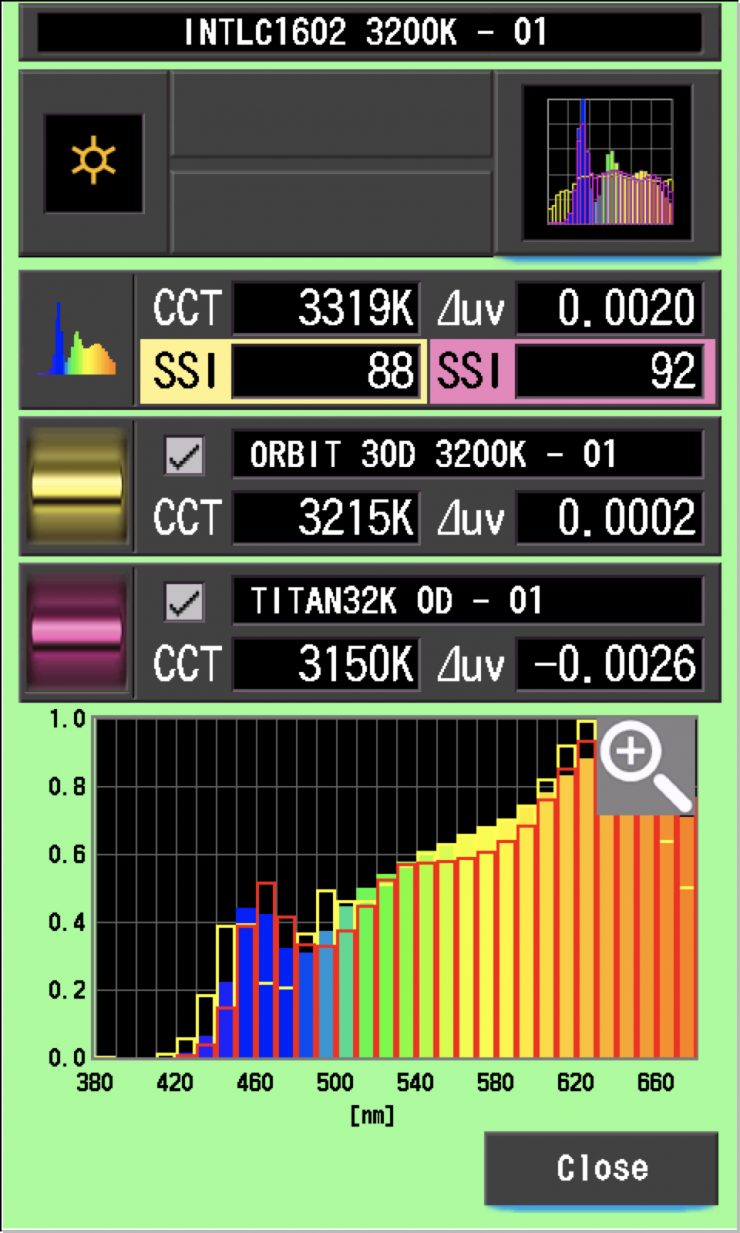
At 3200K the Intellytech LC-160 2.0 and the ARRI Orbiter and Rotolight Titan X1 are a similar match to what they were at 5600K.
Being able to measure SSI in advance and compare different lights you may be using together is a great way of finding out what lights will work together and what adjustments need to be made.
Spectral Distribution
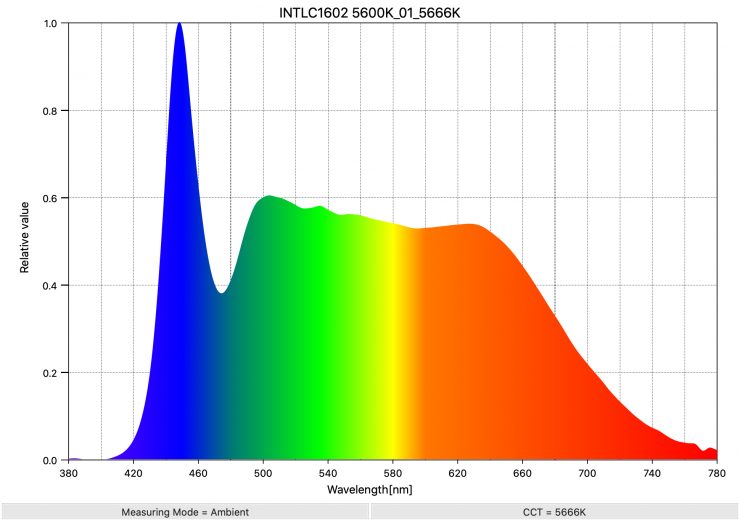
Above you can see the spectral distribution of the Intellytech LC-160 2.0 when it is set at 5600K. The spectral distribution is nice and full and there aren’t any big spikes where there shouldn’t be.
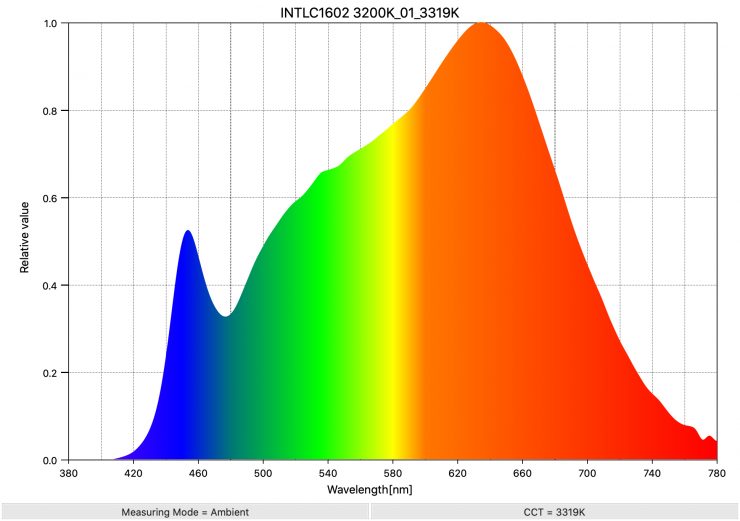
Above you can see the spectral distribution of the light when it is set at 3200K. The spectral distribution is nice and full and the light only has the slightest bump in green.
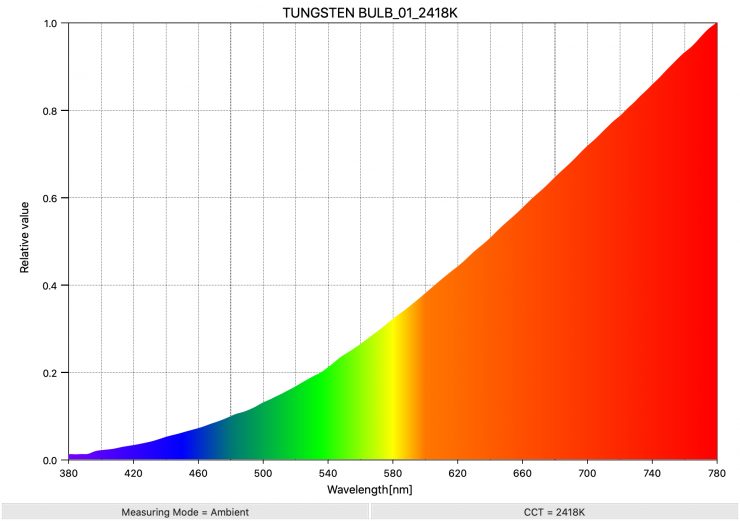
As a comparison, above you can see what the spectral response of a tungsten light bulb looks like.
Real-World Performance and Quality of Light
As I always say, photometric scores only tell you part of the story. So do the scores from the Intellytech Intellytech LC-160 2.0 translate into real-world performance? The fixture produces a nice quality of light, especially when used with the included softbox.
It isn’t overly bright for a fixture of this size, and you do need to take that into account. Having 3880 lx (without diffusion) is going to mean that this light will only be suitable for certain applications. As a key light or a fill light, it will work well as long as you aren’t trying to match a bright background.
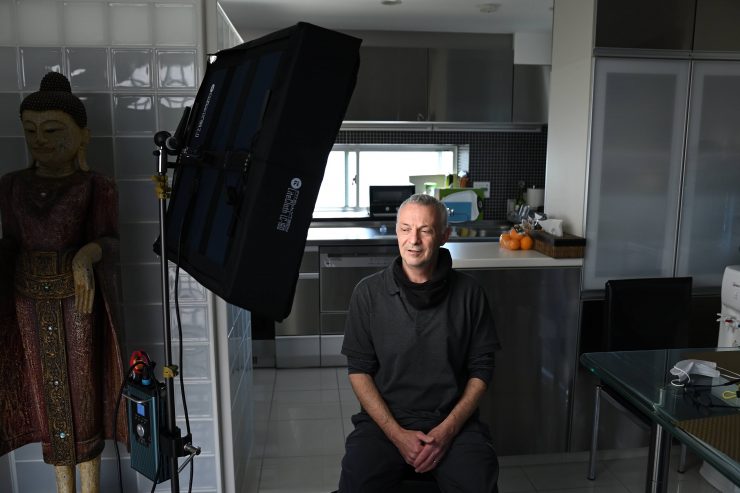

shot from Sony FX9 
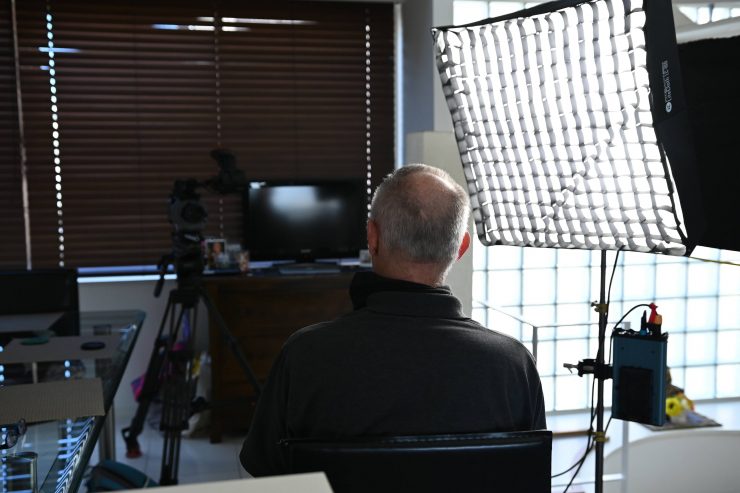


ungraded S-Log3 image
Above you can see a couple of shots of how the light looks when using the softbox and honeycomb grid. No other lights are being used in these examples. The LC-160 is capable of producing nice soft light despite the included softbox not being that deep. With the honeycomb grid you can greatly reduce the light’s spill which is very hand when you are working in tight spaces or small rooms.
In a pinch, because the light is a flexible panel, you could also bend it in half and have one side of the light facing one direction and the other side of the light facing the opposite direction. This makes for a very quick and easy solution if you need to light the interviewer and the interviewee with a limited amount of lights.
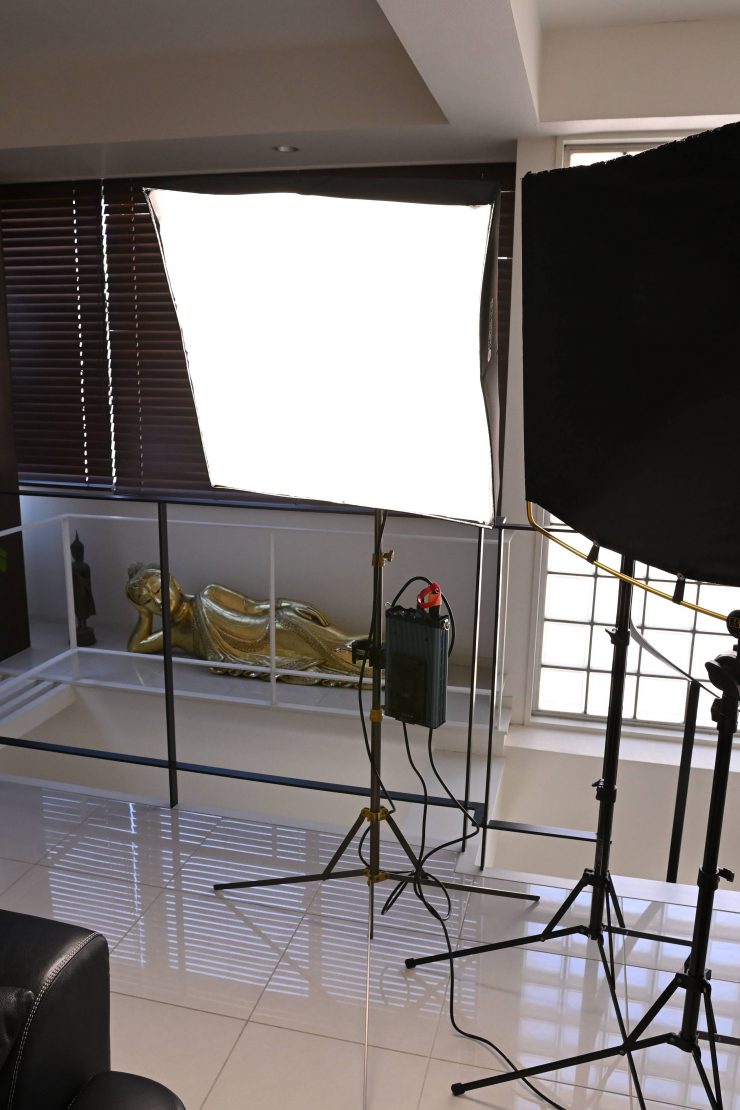
Despite its relatively modest output, the wide beam angle certainly helps to spread that light out over a wide area. In a lot of ways, this makes it more useful than a traditional 1×1 panel as it allows you to create a larger, softer light source that isn’t possible when using a lot of 1×1 panels.
I like that I can use the lights via mains power or through a flight safe V-lock camera battery. This makes it very suitable for traveling shooters.
It is great to see that Intellytech got rid of the separate power supply and now you only have to deal with one box. This saves on set up time and reduces the number of cables you need to connect. I also like that the entire kit fits in a hard case that doesn’t take up too much space.
Who is the light aimed at?
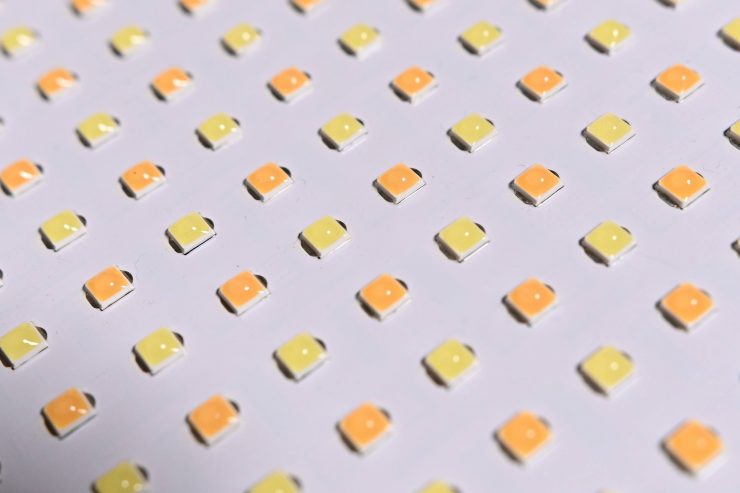
You could use the Intellytech LC-160 2.0 for lots of different applications, but the light is certainly being targeted as a nice mid-sized portable light source that can be used in any location.
For traveling shooters who work by themselves or in small crews, the light makes a lot of sense as it can easily be powered in the field and because it is a flexible panel light it is easy to mount or position in places where other lights won’t go. Yes, it does take a little longer to set up than a traditional 1×1 LED panel, but I am personally willing to take that extra set-up time for the versatility a flexible panel provides.
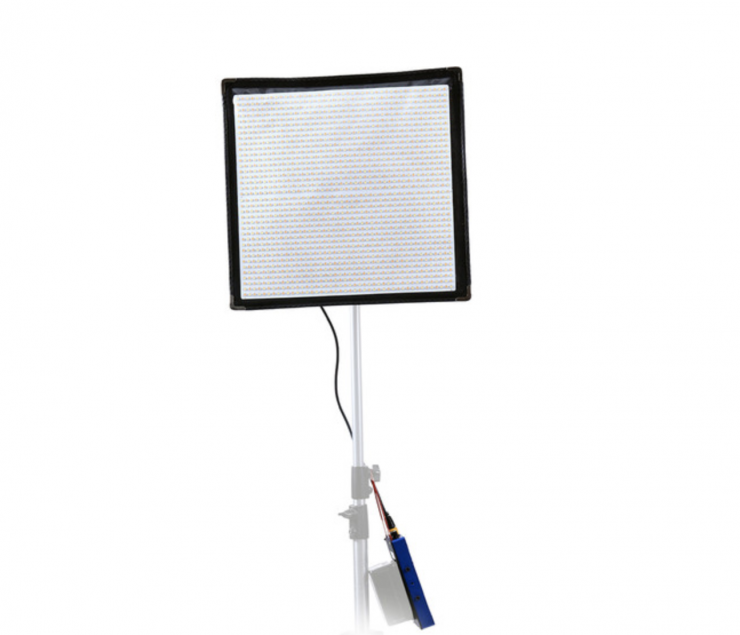
There aren’t actually that many 2×2 sized flexible bi-color panel lights on the market. Most flexible panels are either 1×1 or 2×1 sized. Below is a couple that I could find:
- YeGrin Scarf Flexible 2×2 200W Bi-Color LED Panel $2,452.00 USD
- Chimera PL100 2×2′ Head Unit LED Kit $1,471.90 USD
Both Westcott and Godox used to make 2×2 Bi-color flexible panels, but they have now been discontinued.
Optional Accessories
Intellytech offers the LC-WR – Wireless Remote Controller ($59.00 USD) and either a 20′ or 32′ LiteCloth Extension Cable ($27/$39 USD).
The remote controller is fairly simple, but it works well and if you are behind the camera and you want to make an adjustment it makes a lot more sense than walking over to the light and making an adjustment on the controller.
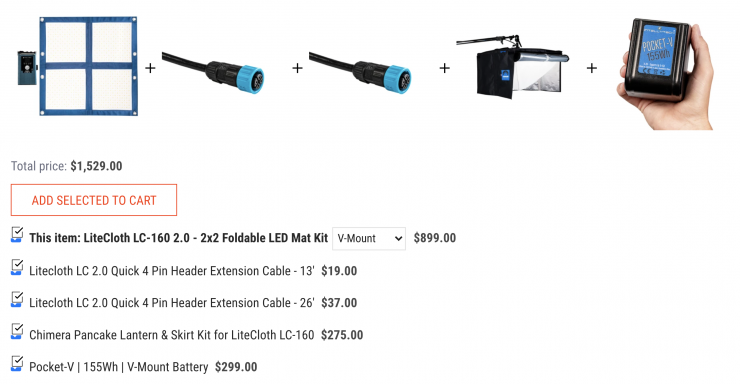
There is also a range of other accessories available.
Price
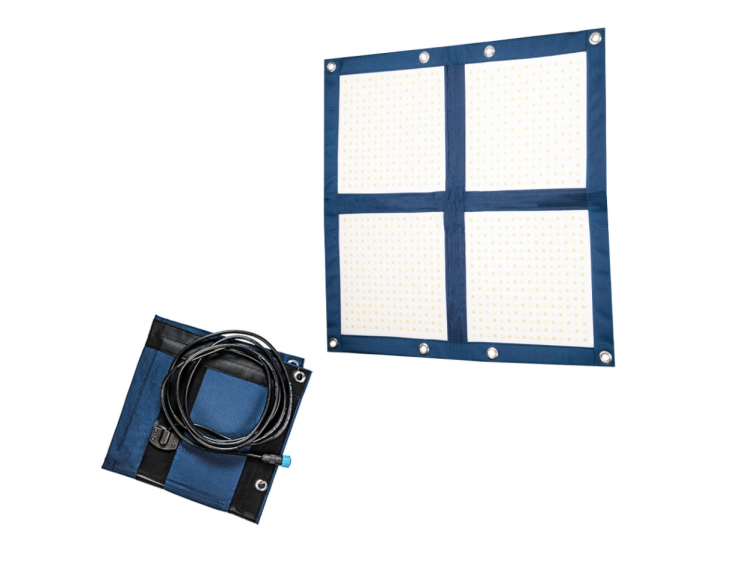
The Intellytech Intellytech LC-160 2.0 is available in two versions for $899 USD. The only difference between the two versions is the choice of either V-Lock or AB Gold Mount battery plates on the controller/power supply.
The Intellytech LC-160 2.0 is well priced and you certainly get a lot of value for money. If you think of the light as 4 individual 1×1 panels you are essentially only paying around $225 USD for each panel. The fact that you also get so many included components and a hard case just increases its value for money.
Alternative Solutions
There aren’t actually that many 2×2 sized flexible bi-color panel lights on the market. Below are two that I could find:
- YeGrin Scarf Flexible 2×2 200W Bi-Color LED Panel $2,452 USD
- Chimera PL100 2×2′ Head Unit LED Kit $1,471.90 USD
Godox and Westcott both used to make 2×2 Bi-color panels but they have been discontinued.
Conclusion
The Intellytech LC-160 2.0 is a great solution for solo shooters or anyone who travels a lot and needs to check gear in on planes. It is compact, reasonably well made, relatively easy to set up, it can be run off a flight safe battery, and it is very versatile.
The Intellytech LC-160 2.0 could still be a little better when it comes to putting it together, however, it is quite a lot easier to set up compared to some of the other flexible panel lights. It is color accurate, has a reasonable amount of output, and is versatile enough to be used in a variety of lighting situations.
The Intellytech LC-160 2.0 isn’t going to be suitable for everyone, but if you like the idea of a portable large source that can be powered off a single flight safe battery then it certainly ticks a lot of boxes. For traveling crews, this light makes a lot of sense.
Like what we do and want to support Newsshooter? Consider becoming a Patreon supporter and help us to continue being the best source of news and reviews for professional tools for the independent filmmaker.

